















Ireland’s new Forestry Programme is now open. Attractive grants and premiums worth more than €1,100 per hectare are available. Plan for the future with trees on your farm.
Explore your options at www.gov.ie/forestry

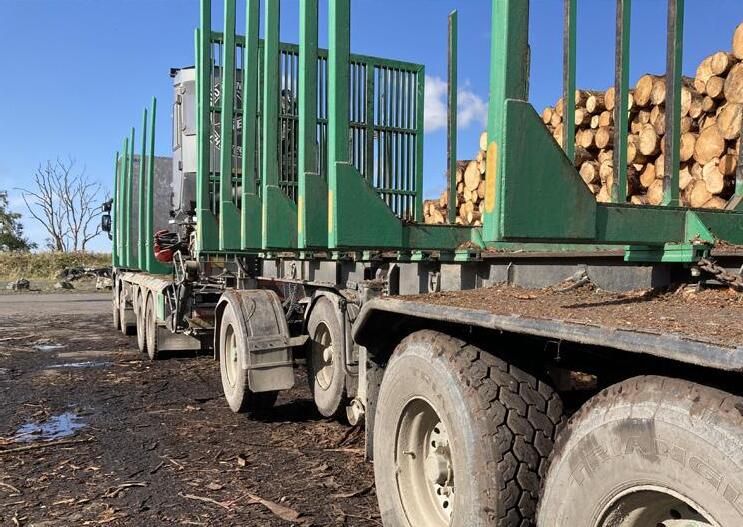
46
Welcome to the Spring/Summer Edition of Forestry & Energy Review Magazine. There has been a lot of activity in the forward planning space of the Forestry sector in the past short period. Applications for the new afforestation program are now open. It is viewed as being reasonably generous if it is available to you. As usual the devil is in the detail: restrictions in relation to soil type, species selection, protection of watercourses, bird habitat, and various other measures is causing a lot of worry and stress to potential growers. Everybody agrees that more trees need to be planted and the willingness among farmers and other landowners to get the job done
Publisher:
Denis Lane
Tel. + 353 91 777222
Email: dlane@dawnmedia.ie
Production: Lauren McGregor
Shauna Quinn
Contributors:
Noel Kennedy Teagasc
Marie Doyle UCD
Sarah Keenan UCD
Charles Harper UCD
Killian Murphy UCD
Virginia Morera-Pujol UCD
Barry MacMahon UCD
Dr Simone Ciuti UCD
Maarten Nieuwenhuis UCD
Tom Kent SETU
Tom Houlihan Teagasc
Michael Somers Teagasc
John Casey Teagasc
Oliver Sheridan Teagasc
Jonathan Spazzi Teagasc
Dr. Ian Short Teagasc
Dr. James Moran GMIT
Dr. Daire Ó hUallacháin UCD
Dr. John Finn UCD
John O’Connell LTWO
Jonathan Sykes LTWO
Fergus Moore DAFM
Eugene Curran DAFM
Rachel Irwin Teagasc
Niall Farrelly Teagasc
Aine Ni Dhubhain UCD
Eugene Hendrick SmartEarth
Dr Dheeraj Rathore Teagasc
Edward Wilson Silviculture
David Gil-Moreno TERG
Conan O Ceallaigh TERG
Dan Ridley-Ellis TERG
Annette M Harte TERG


is the…perhaps a formula to overcome the hurdles will become clearer over time.
The ash-dieback financial support scheme has also been announced. Again, it will take some time for the details to be ironed out and finance to become available for the work to be done.
Hoping you all Keep safe during these challenging times. We trust you will enjoy reading this publication which will continue to provide a voice for the Forestry and Energy sectors
The Publisher Forestry & Energy Review
Vincent A Byrne DAFM
Ciaran Nugent DAFM
Eibhlín Vaughan UCD
John O’Sullivan UCD
Fiachra O’Loughlin UCD
Mary Kelly-Quinn UCD
Eva Freeney UCD
Johnathan Turner UCD
Kevin O Connell Teagasc
Joe Harrington MTU
Rodhraí Crowley MTU
Jeremy Ryan GRET B
Denis Mahon DAFM
Brendan Fitzsimons Tree
Council
Brian Tobin UCD
Susie Foreman UCD
Conor
14 Are You Ready? Protecting Your Forest From The Threat Of Fire
Managing fire risk is vital for Irish forest owners to protect upland habitats and communities. This article provides practical steps to assess, prevent, and prepare for wildfires, ensuring forest safety and sustainability.
16 Carbon Dioxide Removal – A Vital Tool In Tackling Climate Change
With global CO2 emissions still rising, this article highlights the crucial role of carbon removal strategies alongside emission reductions to achieve climate targets and ensure a sustainable future.
20 APF 2024 – An Unmissable Event
The UK’s Premier Forestry and Arboricultural Event Returns to Ragley Estate.
22 Wood Fuel Quality Assurance Scheme
Mobilising the biomass supply chain nationwide.
24 Expanding Equipment Markets Amid Environmental Urgency
As global calls for increased forestation rise, companies like McHale Plant Sales boost their portfolio with advanced machinery, aiming to meet the burgeoning demand for sustainable forestry practices.
26 Worrell Timber Group: Revolutionizing Biomass Harvesting
Biomass harvesting techniques and technologies for a sustainable future.
30 Ash Dieback Disease
New financial support available to affected landowners.
34 Arboriculture Careers: Fostering a Sustainable Future with Trees
As Ireland’s sole arboriculture education provider, our mission is to ensure a steady, sustainable influx of new professionals, regardless of background or experience.
40 Irish Timber Species For Building Construction
Dr David Gil-Moreno and Dr Patrick McGetrick give an insight into the quality of tree species grown in Ireland.
46 Sustainable Timber Transport Solutions –The Scottish Experience
A recent study tour saw how technological solutions and a collaborative approach are helping Scotland’s drive for sustainable timber transport.
52 Ash Dieback - Updates from the Teagasc Ash Breeding Programme
There is intensive research ongoing in Ireland to identify Ash trees tolerant to Ash Dieback disease. Dr.Dheeraj Rathore, Teagasc Tree Improvement Researcher updates the progress of this research.
58 Transforming Forests and Forest Cultures in a Changing World
A group of pioneering Irish foresters and woodland owners are emerging as leading practitioners and advocates of Continuous Cover Forestry in Europe.
64 ADAPTForRes
Exploring strategies to enhance climate resilience in Irish forests.
70 Advantages of Do-It-Yourself Forestry Machinery
There are as many opinions on how to manage your forest as there are forest owners ; especially regarding Sitka spruce in Ireland.
72 Logosol
Spring Campaign 2024 now on.
With up to 4% of farm workplace deaths in Ireland and an estimated 6.5% of injuries associated with chainsaw and timber related work, chainsaws on the farm can be a lethal tool if improperly used or poorly maintained.
A new chainsaw safety video launched in October by Minister of State at the Department of Agriculture, Food and the Marine with special responsibility for Farm Safety, Martin Heydon TD is designed to educate users with the knowledge and skills necessary to operate chainsaws effectively and safely.
A collaborative project between Teagasc, FBD, Farm Safety Partnership and Health and Safety Authority the video provides practical information for farmers on chain saw use and associated timber work. With up to 80,000 chainsaws used on Irish farms of varying age and states of repair the video highlights the necessary safety measures needed when undertaking this hazardous work
activity.
The video is presented by Arthur Kierans, Machinery Training Technician at Teagasc Ballyhaise Agricultural College, County Cavan who communicates the message that safe chain sawing and timber work is a combination of having adequate knowledge and skill, having a modern chainsaw with up-to-date safety devices, wearing chainsaw PPE and using safe techniques.
The Chainsaw Safety video shows approaches and techniques for small scale timber work. For large scale chain sawing and timber work the Teagasc advice is that a specialist contractor be used. Further guidance on approaches to adopt is available on the Health and Safety Authority web site.
The Chainsaw Safety video can be viewed at: https://www.teagasc.ie/ rural-economy/farm-management/farm-health--safety/videos/





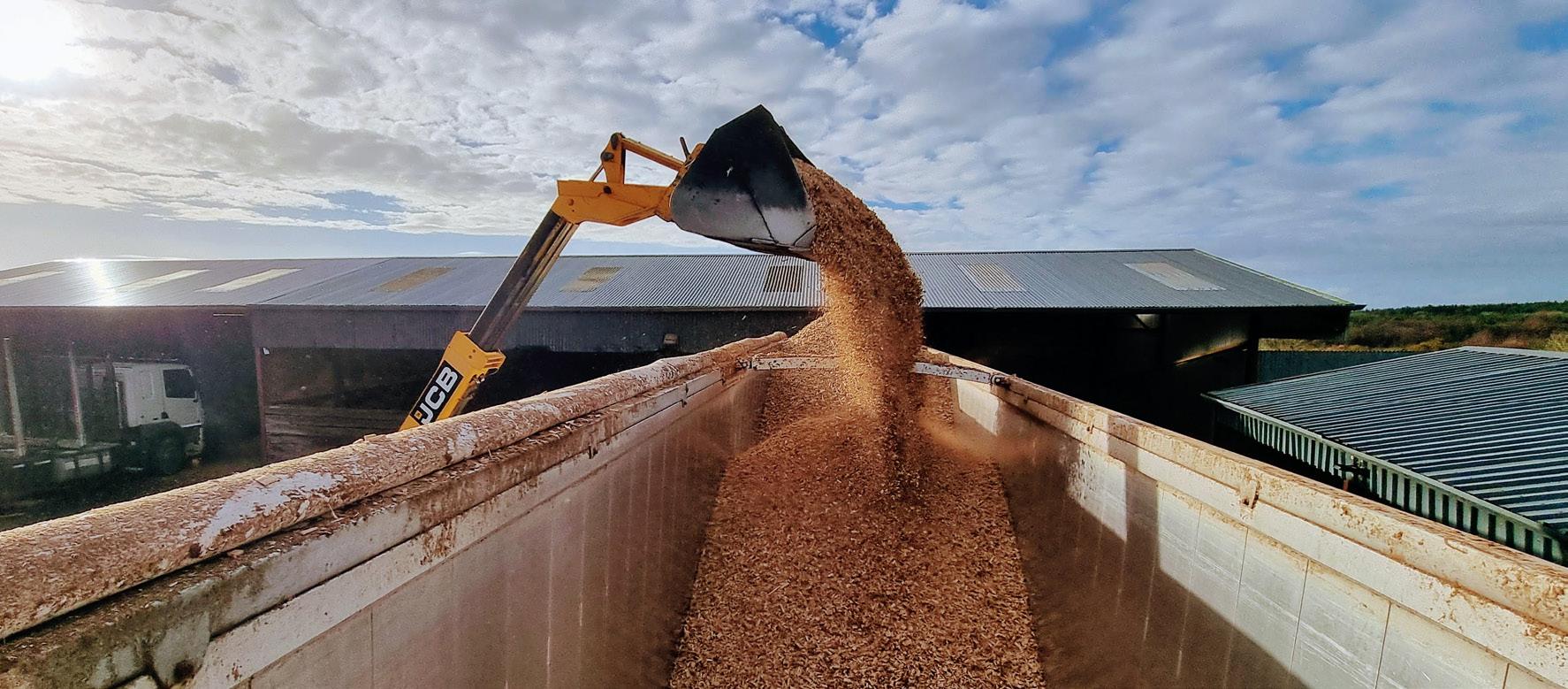



Irelands leading supplier of WFQA certified Wood Chip for SSRH boilers
CONTACT US TODAY
Kenny McCauley 0861631628 mccauleywoodfuels@gmail.com facebook.com/McCauleyWoodFuels





Teagasc recently completed a nationwide series of forestry one to one advisory clinics and reported strong interest for information about forestry across the country. Due to their popularity and very high demand, additional clinics were required bringing the total to 70 clinics in 26 Teagasc locations.
Planting a new forest or managing an existing forest raises many questions. However everyone’s situation is different and so the tailored advice provided at the clinics can prove critical to empowering farmers and landowners to make informed decisions on many relevant issues.
In total there were 482 individual consultations completed providing a local, objective and confidential source of advice and information about a whole range of forestry topics.
New planting enquiries made up more than 60% of all consultations with farmers and landowners seeking objective and independent guidance and information on the many planting options offered under the 2023-27 Afforestation scheme. In particular there was a lot of interest in eligibility for the Native Tree Area scheme (NTAS).
Issues and topics covered at the clinics included:
• Native Tree Area Scheme – conditions and eligibility
• Other planting opportunities under the 2023-27 Afforestation Programme
• Afforestation interaction with farming schemes especially ACRES and BISS.
• How to apply, what are the returns and getting the job done
• Forest management schemes and advice including Reconstitution of Ash Dieback, Forest Roads and Woodland Improvement Scheme
• Felling and selling timber and replanting
In relation to the Native Tree Area scheme, Teagasc forestry advisers carried out over 300 NTAS eligibility checks. Where land was ineligible the reason/s were identified and explained with potential alternative afforestation options being discussed in many cases.
An important cohort of those attending the clinics were forest owners seeking advice and information on how best to manage their conifer and broadleaf forests. Issues raised during consultations ranged from early management where plantations had just received their maintenance grant at four years old to managing Ash Die-back and planning for the thinning of conifer and broadleaf forests, selling timber and market options.
For the latest comprehensive information on all aspects of forestry see www.teagasc.ie/forestry.
With ever increasing awareness of the vital role of trees in mitigating climate change, as well as contributing to improved biodiversity and water quality, Teagasc has launched “Your Tree Planting Companion” as a practical guide to planting trees.
At its recent launch, Minister of State with responsibility for Forestry at the Department of Agriculture, Food and the Marine, Senator Pippa Hackett, congratulated Teagasc on the launch of the new booklet, which explains the key stages to successfully planting and looking after trees, as an important resource for all landowners.
The 60 page booklet provides plenty of inspiration and comprehensive guidance on where to plant trees. It aims to take the mystery out of planting and looking after trees by explaining how to plant trees and how to look after them to ensure successful and strong growth.
Is your soil dry or damp, acidic or alkaline, are you looking for a large or small tree, or maybe a tree that has beautiful autumn foliage? If you’re not too sure what tree would suit, the handy tree selector table gives you the confidence to choose the most suitable tree for your farm or garden.
This booklet will help you to plant and grow on the right trees in the right locations benefitting local biodiversity, enhancing landscapes and storing carbon. - the trees you plant now, can give many years of enjoyment to you and the people around you.
“Your Tree Planting Companion” is authored by Teagasc Forestry Development Officer, Steven Meyen.
Your Tree Planting Companion is available from your local Teagasc Forestry Advisor and can be downloaded from the forestry section of the Teagasc website: https://www.teagasc. ie/media/website/crops/forestry/advice/Your-tree-plantingcompanion.pdf


Do you have adequate Insurance in place? Remember to cover reconstitution costs. Are your Firebreaks in order?
Do you have a Fire Plan and review it regularly? Report fires to the Fire and Emergency Services. Report suspicious activity to the Gardai.
The burning of growing vegetation on uncultivated land between 1 March and 31 August each year is prohibited by law.
Landowners who intend to burn vegetation are obliged to give you (and the Gardai) written notice if they intend to burn within a mile of your forest and you are entitled to object by counter notice (within three days).
Following the launch of the Forestry Programme 2023-2027, Teagasc Forestry Development Department, in conjunction with the Department of Agriculture, Food and the Marine (DAFM), has been busy with both in-person and virtual promotion of the exciting forest creation opportunities that are available in the new Afforestation scheme.
Forestry Webinar –In September over 800 people registered to attend an information webinar focussing on the opportunities available to farmers and landowners to plant new forests.
Titled “New Forestry Programme – New Opportunities for Forest Creation, the one hour webinar was broadcast from the new Teagasc studio in Oak Park, Carlow with the technical support of the Teagasc Digital Media Production Team.
Following a welcome address by Minister Pippa Hackett the webinar combined video and in-person presentations with overviews by DAFM and Teagasc speakers of the new Afforestation/Forest Creation options and forestry in the context of farming and climate change. Leitrim farmer Sean Creamer, winner of the 2023 TDS Teagasc Farm Forestry Award recounted his personal forestry experience in a short video.
The webinar included with a panel discussion with Teagasc and DAFM experts addressing the importance of decision making when considering forestry, the grant and planting processes and dealing with the challenges that can arise. The event concluded with a busy Q&A sessions where many and varied questions submitted by the audience were analysed and answered.
The link to the recording of the webinar on YouTube is https://youtu. be/xRnVzcOrVkk?si=B6g6_iDkIsuBjqBq
Forest Information meetings – Public meetings were the focus during October when 930 farmers and landowners attended a nationwide series of 20 information meetings to promote the new Afforestation Scheme 2023-2027.
Held mainly in local Teagasc centres the meetings were led by the local Teagasc forestry adviser with a DAFM forestry inspector who

presented on a range of topics including the opportunities for forestry, new grants and premiums, changes to technical scheme requirements, selecting a forest type that suits different situations and how forestry interacts with other agricultural schemes. Attendees also had the opportunity to ask questions during an extensive question and answer session with a range of afforestation and management information leaflets available to take away.
Many attendees also engaged in individual discussions with the presenters towards the end of the event and Teagasc advisers also followed up on several queries raised at the different meetings.















Our research covers many aspects of the life cycle of a forest from seedling to sawdust. Research is carried out in Teagasc research centres in state-of-the-art laboratories and growing facilities and on privately owned farm forests throughout Ireland.









Teagasc provides objective and independent advisory services to all private landowners on forestry related matters. Teagasc forestry advisors provide free, independent and objective advice on any technical or nancial aspect regarding forestry.


Teagasc offers a wide range of QQI certi ed practical courses. Topics can include formative shaping of broadleaves and timber measurement. A forestry quali cation from Teagasc enables students to develop wide ranging and interesting careers.
In March all roads led to Limerick Junction, Co.Tipperary for a very successful Teagasc Talking Timber 2024. This popular annual conifer timber marketing event organised by Teagasc in association with DAFM and Forests Industry Ireland drew an impressive audience of three hundred forest owners and industry representatives.
This year’s Talking Timber theme “Know Your Forest” clearly struck a chord with forest owners with timber to sell keen to build their awareness of the timber products and economic returns they can realise from their forests. With many private forests on the pathway to producing high quality, large volume logs and many other products and services, forest owners need to know the value of this resource. A key take home message was the importance of owners arming themselves with robust inventory and valuation information for their forests and standing timber before going to the market.
Talking Timber provided a great opportunity for forest owners with timber to sell to hear about the challenges and opportunities for successful forest management and timber sales, what logs the sawmills are looking for, the current market prices and to talk business with a wide range of forest industry service providers.
The event was opened by Paul Savage, Assistant Secretary General, DAFM who welcomed attendees and gave an overview of the new 2023-27 Forestry Programme and the opportunities if offers across the forestry supply chain from nurseries and afforestation to forest roads and knowledge transfer.
At the FII outdoor log and timber products display Gerry Dolan of Glennon Brothers, who supplied the timber, explained how he as an experienced timber buyer assesses log quality to ensure that the sawmill can meet both its volume and quality requirements. The key messages here were that actively managed forests with quality timber production will generate interest and competition from sawmills and other timber markets. He emphasised the importance of Sitka spruce to produce commercial timber and that we need to keep planting enough Sitka spruce to ensure a sustainable future for timber growers and end users.
In the mini conference session, local Teagasc forestry adviser Michael Somers challenged owners to become their own forest
managers by developing their knowledge and information about their forests putting them in a powerful position to sell timber. He outlined the continued advisory and research support of the Teagasc Forestry Department to forest owners.
Ciaran Nugent, DAFM forestry inspector outlined the opportunities, improvements and innovative aspects in the new forest roads scheme to support sustainable timber mobilisation.
Dr.Máirtín MacSiúrtáin, Emeritus Professor of Forestry, UCD posed the simple question “Why measure?” He went on to demonstrate how accurate and regular measurement of commercial conifer forests provides invaluable knowledge and that “knowledge is power” for owners and foresters to plan and execute optimal silvicultural strategies, timing of harvesting and timber sales.
Tim Ryan, a tax expert with Ifac, presented a timely forestry taxation update. With the potential for substantial one off income from clearfell and large later thinning sales he highlighted the importance of tax planning to minimise tax liabilities including in inheritance situations.
In the final presentation Tipperary forest owner Michael Ryan described his personal forestry journey from planting to clearfelling, the lessons learnt and his advice to forest owners to know your forest and keep control. Michael said, “There is plenty of help available if you look for it: Teagasc, forest owner groups, and professional foresters.” In conclusion he expressed concern about the increasing bureaucracy in forestry and that this could damage the future of farmer forestry.
Talking Timber was closed by Teagasc Regional Manager Donal Mullane. He summarised the key messages that our conifer forests provide great economic and environmental opportunities but like farming, building knowledge and active management are key to success. He reassured the audience that Teagasc will continue to offer support to owners to maximize their crops.
There was strong positive feedback from both forest owners and industry representatives who welcome this annual opportunity to network with each other and start building forestry business relationships. Presentations from Talking Timber 2024 are available to view on https://www.teagasc.ie/crops/forestry/news/2024/talkingtimber-2024.php .








Today, successful forestry operations require more detail management than perhaps ever before. Luckily, it does not have to be complicated or nerve consuming.
Modern harvesting generates plenty of data about how much machines produce, how they consume time and fuel, when might be the ideal time to maintain them, and how they should be moved around to keep the production chain going at full speed.
By continuously gathering data from your operations, PONSSE Manager 2.0 selects the pieces that are relevant for improved efficiency and better productivity and present them to you in a way that is easy to find, interpret, and utilize.
Manager 2.0 is a comprehensive solution that gathers Ponsse’s digital solutions in the same environment, so that you only need to sign up once to access them all. You can design a personalized front page based on your own preferences, and immediately get a clear overview on your business. Variations are promptly discovered, and the causes can be addressed immediately. Ponsse Ireland +353 57 863 3762

Teagasc Forestry Development Department extends a warm welcome to new administration and research staff.
Tracey McDermott, Forestry Administrator
Tracey spent some time in Belfast, Northern Ireland working for the Northern Ireland Civil Service and the Health Service. During this time, Tracey gained over eight years public sector administrative experience in various government departments including the social security benefits office, arrears collection, payroll & expenses, legislation as well as audit & data collection.

In her new role as Forestry Administrator she aims to deliver a compliance, customer-focused and solution-based approach to administration to ensure business continuity by facilitating improved collaboration which will directly lead to operational excellence and increased efficiency.
Based in Teagasc, Mellows Campus, Athenry, Tracey can be contacted at: Email tracey.mcdermott@teagasc.ie and Telephone + +353 (0)91845256
Laura Gillardin, Postdoctoral Fellow in forestry
Laura has joined the ADAPTForRes Research Project looking at the adaptation and protection of Irish forests in order to increase their resilience.
Laura graduated with a BSc in Forestry Engineering in 2011 and MSc in Biotechnology Agroforestry in 2018 both

from Universidad Politécnica de Madrid, Spain. She is on the way to finish a Doctor of Philosophy by the Universityof Oxford, UK.
In her Teagasc role Laura is interested in understanding the genetic adaptation of forest species to climatic changes inside and outside their natural range, including the role of species hybridization and the effects of speciation.
Based in Teagasc, Mellows Campus, Athenry, Laura can be contacted at: Email laura.guillardin@teagasc.ie Telephone +353 (0)91 845200
In his role Junliang will be involved in estimating the impacts of afforestation and forest management on carbon sequestration and greenhouse gas emissions. This will involve a variety of approaches including model and broadscale data synthesis, observational studies, and field experiments.
Junliang graduated with a BSc in Soil and Water Conservation and MSc in Soil Sciences from Northwest A & F University, Yangling, China. He was also awarded a PhD by the School of Biology and Environmental Sciences, University College Dublin, Dublin, Ireland.

Junliang sees his role to contribute to the scientific understanding and policy implications of forest-based climate change mitigation and adaptation strategies.
Based in Teagasc, Johnstown Castle, Co Wexford, Junliang can be contacted at: Email junliang.zou@teagasc.ie
(0)539171367



Email: arbapprenticeship@gretb.ie or Call: 091 706283



We manufacture the Firemaster range of waste wood burners and the Hotbox wood kiln. This kiln will dry 12m3 per batch in approx 48 hours. It is fueled from off cuts from the processor, pallets etc. Power requirement is a domestic 13amp socket with a draw of 500 watts. This Kiln will run @ 70/80 degrees Celsius all day with approx 1/2m3 of waste wood for fuel. Can be set up on concrete blocks and drying in 1 hour.


Like many other European countries, Ireland is a fire country, with wildfire incidents regularly present in our landscapes. Coming out of one of the wettest winters in Irish history in 2024, discussions around fire may seem whimsical, but as rains yield (hopefully) to drier weather, fire risk rapidly follows in our uplands, bogs and other high fire risk landscapes.
Wildfires can have catastrophic impacts on upland habitats and rural communities, putting homes, property and lives at risk and diverting emergency services from their main tasks of saving lives. In recent years, fires have also caused considerable damage to forests both private and State-owned. In addition to the direct losses faced by the forest owner, there are downstream economic impacts for our forestry sector, which is an important indigenous industry and a significant rural employer.
While improvements in fire prevention and preparedness have helped dramatically reduce losses to fire in forestry in recent years, the potential remains and will continue to develop in line with ongoing climate and land use changes. Forest owners and managers need to continue to maintain appropriate vigilance around fire issues.
Luckily, Ireland’s wildfires present at the lower end of the scale of intensity and size, when compared with other parts of Europe. Forests can be insured against losses to fire, and this is advisable. Forest owners can also largely limit exposure to fire risk on their forest holdings though taking some simple, low-cost steps at the onset of fire season.
Owners should assess properties in relation to fire risk and basic fire mitigation factors that can be applied. An assessment can be simple, based on available up to date online imagery or by field assessment, or both. Understanding where and how fire can interact with forest properties is central to this.
At its most basic the risk assessment will look at the following issues:
1. Exposure to fire risk
2. Available fuels
3. Access
4. Fire plan
1. EXPOSURE
Most fires affecting forests in Ireland come from outside the forest from other land use types. Put simply, some areas of Ireland are more fire prone than others, and fire is a regular landscape feature in these places. E.g., Hilly and rugged West Cork landscapes are more fire prone than cultivated, arable lands of East Cork. If your forest is located in an upland area, this is likely to be more fire prone than lowland
pastureland due to the nature of the vegetation involved. The greener the land, the better, where fire is concerned. The type of farming also has a bearing – there is a tradition of fire use associated with traditional upland sheep farming and also with some types of traditional turf cutting for fuel. Forest owners living close to their forest holdings will be well aware of these patterns, but these may not be apparent to newer owners of properties in these types of areas.
The presence and proximity of flammable vegetation types to the forest edge is critical, as is arrangement of vegetation that can act as “ladder fuels” that lift fire into the canopy of forests. For example, dead grasses such as Fionnan or Molinia Grass can carry fires quickly over ground, and tall shrub species such as Gorse act as ladder fuels. Identifying and keeping ladder fuels cut back and suitably separated from crops is a critical step in protecting forest properties from fire.
Fuels are any material that will burn in the event that a fire approaches the forest, including dead grasses, light shrubs such as heather and gorse. Heavier materials such as dead logs and standing trees will also become available to burn over time as dry weather persists. In spring, in dry weather, almost all upland vegetation is flammable. In high risk weather conditions, these fuels can be expected to carry fire rapidly over extensive areas, until the fuels run out or are broken. Certain tree species, especially pine species are especially flammable, and are adapted to fire as part of their natural reproductive cycle.
Firebreaks are a long standing method of ensuring that fuels and crops are kept apart. Typically, an effective firebreak will be 1.5 times the expected flame length for the fuels involved. The current standard for firebreaks was developed with grass fuels in mind. For grass fuels this is reasonable, but tall overgrown gorse may need a firebreaks multiples of usual dimensions to be effective. As land use changes take hold and grazing and prescribed burning intensities fall off, greater quantities of vegetation are available as fuels than was previously the case. Again, the treatment of fuels to reduce the requirements of firebreaks to a reasonable level is critical. Existing firebreaks should be maintained by screefing or removing vegetation mechanically by excavator so that the soil is bare and unable to carry fire.
As a minimum, based on grass fuels, Firebreaks should be at least 6 metres wide and should be maintained clear of flammable vegetation throughout the lifecycle of the plantation. The use of this type of firebreak may not always be compatible with water quality protection requirements at every site and screefing may have to be substituted with other more suitable actions like flailing or mowing that will reduce fuels availability without exposing bare soil to the elements. Where

there is an existing firebreak in place owners should ensure it has been adequately maintained and fit for purpose.
Good access is essential to safe, fast and effective firefighting, in the event this is required. Forest owners should assess if existing access routes are adequate, accessible to HGV sized vehicles, and clear of obstructions. For older crops 15+ years of age, the Forest Road Scheme offers supports for road construction. Consideration should be given to future fire protection needs when designing forest roads, including provision of suitable water storage and open water access where available.
Following assessment, updated Fire Plans should be developed for all forests, including a map showing access routes, potential fuel free control lines, safe assembly points for firefighting personnel and equipment and potential open sources of water for firefighting. The plan should also include contact details for local private and Coillte foresters, neighbouring landowners, and forest owners to summon help should
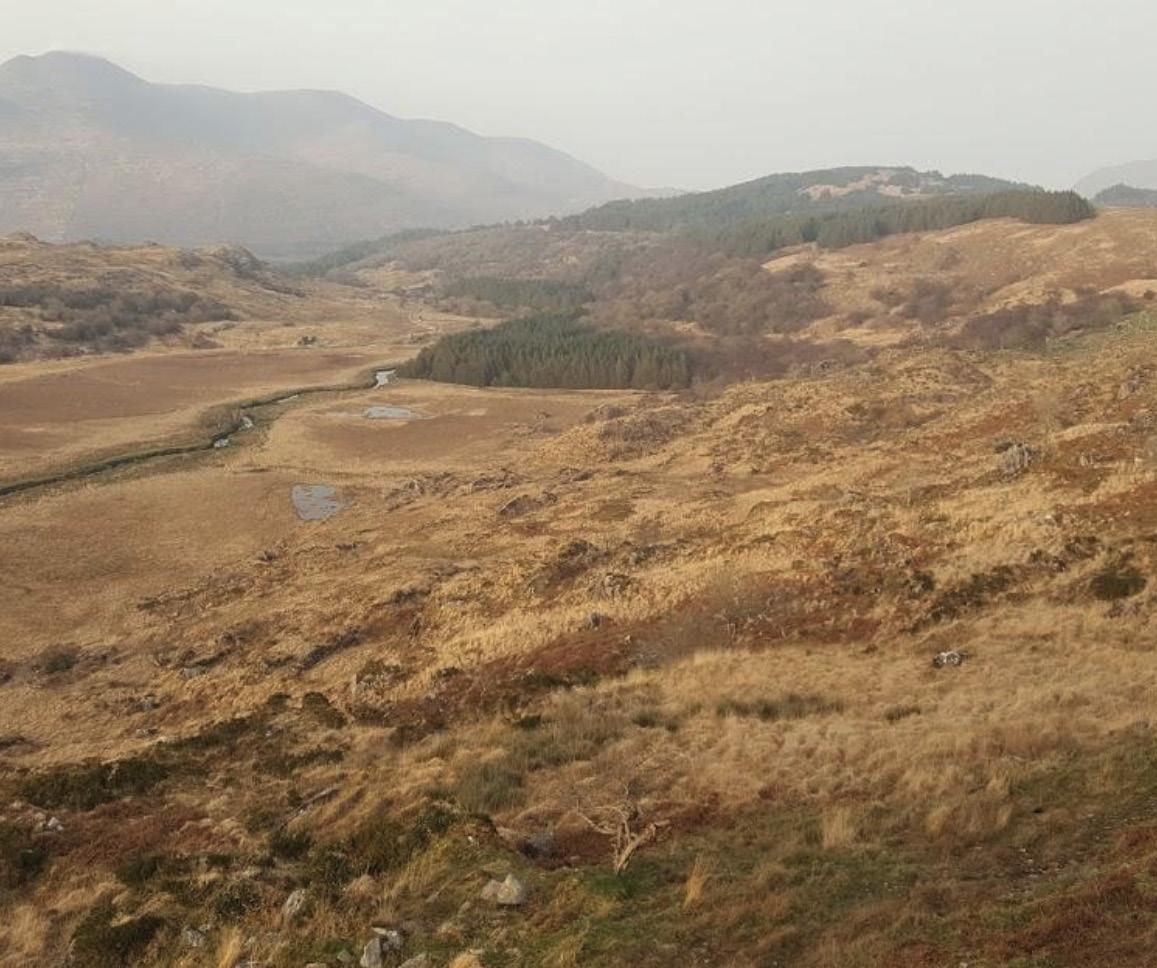

the need arise.
Keep the fire plan to hand throughout the fire season and adjust vigilance levels in line with Fire Danger Notices issued by the Department of Agriculture, Food and the Marine. Have fire-fighting tools such as beaters and knapsack sprayers to hand, tested and ready to use. If you do not live in reasonable proximity to your woodland a local caretaker or forest neighbour should be employed to keep watch and should also have a copy of the fire plan with your details and the above, contact numbers. Ensure forest entrances and access routes are not blocked by parked vehicles or other obstacles, especially where visitors or recreational users may be present. Suitable signage to this effect should be displayed on gates or barriers.
Forest fires are a reality in our landscapes in Ireland, in spite of our climate. Lessons learned during the past decade need to be applied to reduce the risk when it occurs, and at the level they present in Ireland, forest fires should be an manageable risk. Small steps taken by individual forest owners, and steps applied cooperatively through forest owner groups should greatly reduce the risk of fire in privately owned forests.



It is over eight years since the Paris Agreement on limiting global warming was adopted by 196 countries at the end of 2015. In the meantime, and despite some success stories in reducing emissions, the annual rate of human-induced carbon dioxide emissions at the global level continues to increase, with 2022 (estimated by the Global Carbon Project (GCP)) reaching a total of 41 billion tonnes, or over 5 tonnes per person per year. Fossil fuel combustion is the leading emission source, which when combined with emissions from cement manufacture is estimated to have reached 37.5 billion tonnes in 2023 (Figure 1 from the GCP).
To further illustrate the scale of global carbon dioxide emissions, Ireland’s carbon dioxide release in 2022 (including land use, landuse change and forestry), was some 41 million tonnes1, so about one thousandth or 0.1% of the global figure. Not that this small contribution exonerates Ireland from contributing to emission reductions. Far from it, the argument that we make no difference no matter how much we reduce emissions simply allows others off the hook. If they don’t do it, then why should we.
In a nutshell, as Figure 1 graphically shows, the cumulative level of carbon dioxide emissions means we have gone beyond a stage where, on their own, even the most stringent of emission reductions
over the coming years will be sufficient to control global warming. That is because carbon dioxide, once it has been emitted, stays in the atmosphere for a very long time, up to 1,000 years.
While the latest Intergovernmental Panel on Climate Change (IPCC) report states that removals cannot substitute for immediate and deep emission reductions, it also acknowledges, given the level of emissions to date, that removals will be an important tool in attempting to reach net zero and net negative greenhouse gas goals by the end of the century. (Simply stated, net negative means that there are less greenhouse gas emissions than removals over any given timeframe.) Even if net zero is achieved by mid-century (itself a very tall order and not attainable in my view) by way of far deeper cuts than heretofore in greenhouse gas emissions, this will not be enough to constrain the global temperature rise to below 2oC. Instead, most of the IPCC scenarios say that at the global level removals of up to 6 billion tonnes/ year are likely to be needed post 2050, and to at least the end of the century.
For the IPCC the targets are at the global level, for the EU and other countries and blocs it means policies and measures to bring themselves to net zero and then to net negative. These extremely challenging county-level goals will entail difficult choices for countries and for some
1 Ireland’s total emissions (which include LULUCF and methane (which is not included in the GCP carbon budget)) in 2022 were just over 68 million tonnes of CO 2 equivalent. 60% of the emissions are estimated to be of CO 2 , so a total CO 2 emission of about 41 million tonnes in 2022.
it simply will not be possible to achieve the reductions required. The EU has taken a lead in developing and deploying ambitious policies and measures under its Green Deal as part of a legally-binding commitment under EU law to become carbon neutral by mid-century. The intermediate goal, Fit for 55, is to reduce total EU greenhouse gas emissions by 55% by 2030, compared with 1990 levels. While emissions declined by 30% over the period 1990-2021, the current projection by the European Environment Agency (EEA) projection to 2030 is for a 48% decrease, well short of the 55% target. The says2 that “compared with the pace of emission reductions observed during the past 10 years, the average annual rate of absolute GHG emission reductions must more than triple to reach the 2030 climate target” (see Figure 2 for trends). It is very hard to see this level of ramping-up being achieved, particularly as a number of Member States, including Ireland, are, on current trends, likely to fall well short of their 2030 target.

But are we traveling the best and most effective road to net negative, and doing the right things, those that make sense from an economic as well as from a climate change and sustainability perspective.
There is strong argument to be made that at national and EU level the policy mixes around emission reductions needs to be reconsidered and adjusted. There is too much dependence on electrification and associated measures, such as supporting EVs and solar panels and the like. Unrealistic targets are the order of the day, with insufficient consideration of effectiveness, in retrofitting for example. Nor is there enough thought given to other important policy matters, such as technology sourcing and access to raw materials, including the all-important and scarce transition metals for battery manufacture. Furthermore, this narrow electrification focus tends to overshadow other renewables such as forest-based biomass and stifle their potential expansion.
In recent days the European Court of Auditors (ECA) has questioned the level of public investment across the EU in supporting EV uptake, and what they regard as unrealistic targets, such as having 30 million EVs on the EU’s roads by 2030. A major concern it raises is the impact of increasing levels of EV imports to the EU at much reduced prices and the threats to the European car industry and associated jobs. Similar concerns were raised by US Treasury Secretary Janet Yellen following her visit to China at the beginning of April. It is worth highlighting some of what she said in a press release after her
visit had concluded: “I am particularly concerned about the impact of Chinese industrial overcapacity in certain sectors as a result of government support, and the impact it could have on the American economy. Last week, I visited Suniva—a solar company in Georgia that was once forced to close down, like other companies across a number of industries, because it could not compete against large quantities of goods that China was exporting at artificially depressed prices. It’s important that this doesn’t happen again. These concerns are shared by our allies and partners, who see potential risks to their own domestic workers and firms”. As this article goes to press the US has announced a range of tariff increases on imports from China, with rises from 25% to 100% on EVs, from 7.5% to 25% on lithium batteries, from zero to 25% on critical minerals, from 25% to 50% on solar cells, and from 25% to 50% on semiconductors.
These are real and pressing issues, with some of the unintended consequences of the rush to electrification becoming manifest. And okay, while the policy message to China is you better let us compete on a level playing field for the EV and solar panel markets or else face tariffs, these recent pronouncements also serve to illustrate the earlier point, about a blinkered policy approach to backing electrification without a fully-thought-out downside strategy, and a tendency to let other proven low carbon technologies, that can contribute to decarbonisation in a cost effective and sustainable way, wither on the vine.
To return to the challenge of balancing emissions and removalsfor most, removals mean growing forests, and using them, as some simplistic commentary has stated, to suck carbon dioxide out of the air. As foresters will tell you it is a lot wider than that, and entails not just growing productive forests, and their ability to concentrate carbon, but also using the carbon to substitute for fossil fuels and displace high emission materials such as oil-based fabrics, and extractives such as cement and iron ore.
While forest-based mitigation is far and away the largest humanmediated removal, the current rate of afforestation globally, as well as across Europe and in Ireland is not sufficient to remove anywhere near the level of carbon dioxide that is needed for a net negative future. Land-use change from agriculture to forestry is made more difficult where there are competing incentives, for retaining the existing enterprise. Also, to be effective in climate mitigation, incentives need to favour the establishment of large blocks of forest, and certainly in excess of 5 ha, so that they can be economically managed and harvested, and which will give a good economic return to the owner (Figure 3). Sustainable levels of harvest will support viable businesses in converting

A thriving crop of Sitka spruce which has been well thinned, and is removing significant quantities of carbon dioxide from the atmosphere and storing it in the trees and soil. At harvest as much as possible of the above ground biomass should be used to displace fossil energy and materials. This will provide the largest sustained mitigation benefit. Rapid reforestation using a similar replacement crop will continue the climate service indefinitely.
2 https://www.eea.europa.eu/en/analysis/indicators/total-greenhouse-gas-emission-trends#:~:text=Net%20 greenhouse%20gas%20(GHG)%20emissions,%2Dyear%20reduction%20of%201.9%25.
and processing wood and wood products, and using them to extend the removal engine.
But afforestation and forest products are not the only show in town when it comes to carbon dioxide removal (CDR). There are a number of other CDR approaches, and while most are in their infancy, some of them can be scaled up in relatively short periods of time. Some are closely related to forestry, but not all. Scaling up and diversifying the removals portfolio will require strong political will, as strong as the current commitment to emission reductions. It will also need community buy-in, and R&D investment tied to feasibility and pilot scale operations, leading to large scale public and private investment in well-tested technologies. All of the removal technologies will need a good carbon price to enable capital investment.
So what exactly is CDR? It is defined by the IPCC as: “Deliberate technologies, practices and that remove carbon dioxide from the atmosphere… It also involves durably storing carbon after is has been extracted from the atmosphere either in reservoirs such as soils, vegetation [biomass], geological formations, or the ocean, or in manufactured products”. The IPCC makes an important distinction that CDR refers only to human activities that intentionally remove carbon dioxide from the atmosphere; it does not include removals by natural forests. The atmosphere must see a difference in carbon dioxide levels as a result of the activity.
Neither does removal mean carbon capture from fossil fuel use. This process involves storing emissions released from combustion of coal, oil and gas but it does not result in a removal of atmospheric carbon dioxide. It is an important distinction as the fossil fuel industry is strongly pushing carbon capture and storage (CCS) as a climate solution. Why CCS is not a removal, and why bioenergy with carbon capture and storage (BECCS) results in lowering carbon dioxide levels , is illustrated in Figure 4.
The figure shows a simple comparison of the atmospheric implications of CCS and BECCS projects, both supplying the same energy service, and both with carbon capture and storage. A number of simplifying assumptions as to scale and a number of variables have been made. For example, upstream (extraction, processing and transport) emissions have been omitted, though for natural gas these are usually several times those from biomass. In the example, the specific carbon dioxide emission per unit of energy delivery have been set as double for biomass in comparison with gas, in line with IPCC guidance (this is because biomass – which comprises mainly carbohydrates - contains

Figure 4. The contrasting pattern of carbon dioxide emissions in CCS (fossil) and removals in BECCS (bio) over a 15-year period. Negative numbers show removals, positive are emissions.
water and less hydrogen than fossil fuels – which comprise mainly hydrocarbons). It is assumed that in both cases 90% of the combustion emissions are captured. After 11 years the biomass raw material system is assumed to be steady state, no new areas enter the supply chain as the emitted biomass from harvest in year 1 has been recaptured. The assumptions can be changed, but as long as the biomass system is sustainably managed the likelihood is that it will eventually become a net sink – a carbon remover. Meanwhile the fossil carbon CCS will continue to emit carbon, albeit at a reduced rate compared to a no capture scenario. In the example the biomass project reaches carbon neutrality on the fuel side after 4 years, and thereafter it is net negative.
The IPCC points out that “CDR methods differ in terms of removal process, timescale of carbon storage, technological maturity, mitigation potential, cost, co-benefits, adverse side-effects, and governance requirements. Implementation strategies need to take into account these differences and potential trade-offs”.
For present purposes a short description of the main on-land removal technologies, the cost range per tonne of carbon dioxide removed, and other salient features are provided in Table 1, which is based on an IPCC infographic.

Table 1: CDR methods, timescales, costs and trade-offs (based on IPCC infographic).

Given the importance of removals in tackling climate change and the need to greatly expand their level, draft legislation for a carbon removal certification framework was proposed by the European Commission in 2022 (see Forestry and Energy Review Autumn 2022). Following an extended period of negotiation and consultation, the framework, CRCF for short, has recently (10 April) been approved by the European Parliament, and will now be considered for approval by the Environment Council.
What exactly the CRCF regulation will enable, and what contribution it could make to the EU’s ambition to be carbon neutralnet zero - by 2050, is now discussed.
Essentially the CRCF is to enable increased public and private investment in carbon removals towards the 2050 goals and endof-century goals. Fundamental to the CRCF is that activities meet four overarching criteria in order to be certified: quantification, additionality, long-term storage and sustainability. These criteria are essential components of any voluntary carbon removal framework, and with a fully operational register should ensure that removals certified under the CRCF will have a climate impact. This has not always been the case in the voluntary carbon market.
The CRCF establishes four classes of carbon removal and emission reduction activities:
• permanent carbon removal (storing atmospheric or biogenic carbon for several centuries)
• temporary carbon storage in long-lasting products (such as woodbased construction products) of a duration of at least 35 years and that can be monitored on-site during the entire monitoring period
• temporary carbon storage from carbon farming (e.g. restoring forests and soil, wetland management, seagrass meadows)
• soil emission reduction (from carbon farming) which includes carbon and nitrous oxide reductions from soil management, and activities that must overall reduce the carbon emissions of soils or increase carbon removals from biological matter (examples of activities are wetland management, no tilling and cover crop practices, reduced use of fertilizer combined with soil management practices, etc.)
Permanent carbon removals refer to bioenergy with carbon capture and storage or direct air capture of carbon dioxide, with storage in geological formations. As pointed out in the previous issue of Forestry and Energy, and in the SEAI publication Carbon Capture Utilisation and Storage, there is considerable potential for BECCS in Ireland, and given the very low level of current afforestation it is an approach that merits serious consideration. It is essential that the feasibility studies for BECCS and the other removal types set out in Table 1 are fully addressed in the studies outlined in the Climate Action Plan, and that the conclusions set out a clear pathway for how chosen options can be brought on stream.
Meanwhile the Commission has established a carbon removals expert group3 as part of the CRCF to develop certification methodologies for the different types of removals. This work will take another year or
more to bring to a conclusion.
While the CRCF is a welcome development, a level of ambition in terms of volume of removals is lacking. There is also a lack of clarity on how the additionality provisions will operate in relation to afforestation projects, given the already high levels of grant aid and premium payments that operate in Ireland. A further critical consideration is how the removal units generated will work in relation to compliance and the need for registry adjustment.
The ability of the EU to reach its 2030 and mid-century net greenhouse gas emission goals, is becoming increasingly unlikely. This trend is mirrored at the national level, where it is highly likely, based on EPA projections, that the carbon budgets will be exceeded and neither will we meet the EU Effort Sharing 2030 target.
Overall, the heavy reliance at EU and national levels on electrification of heat and transport to drive down emissions is increasingly seen as narrowly focussed, and its reach will be insufficient to achieve the 2030 or mid-century targets. Also, concerns are now being raised about the impacts on European manufacturing of cheap and below-cost imports of EVs and solar panels, and related technologies. Across many developed countries the rush to electrify everything is now causing pause for thought.
Electrification is too often seen as the only answer to decarbonisation. This is unwise and risks a number of perverse outcomes, not only in trade, but as has been seen in electricity markets themselves with windfall profits being generated for renewable energy suppliers when, following the Russian invasion of Ukraine, the very expensive oil and gas prices that prevailed set the market clearance price. This outcome is due to the need for a fossil backup to deal with the intermittency problem of wind and solar, which will remain unresolved for at least another decade.
Removals, too often wrongly viewed as an excuse to go easy on emission reductions, are now viewed by most of the responsible scientific community as essential to avoid catastrophic climate change, combined of course with deep and immediate reductions in all greenhouse gas emissions. Forests and forest products are likely to remain the predominant removal for the coming decade, but with constraints in terms of competing land uses, and the emergence of a suite of new and not so new removal technologies, such as bioenergy with carbon capture and storage, biochar and direct air capture and storage, the removal spectrum is broadening, and projects using these approaches are beginning to come on stream.
The EU’s Carbon Removal Certification Framework is a welcome, albeit low ambition development. It should bring greater assurance to buyers of voluntary carbon credits that each tonne of removals bought is making a real contribution towards a net negative future. It is imperative that it is made operational in as short a time as possible. It also needs a stated level of ambition and the promotion, recognition and supports needed to encourage and mobilise private sector investment to achieve a climate-meaningful scale. 3 https://climate.ec.europa.eu/news-your-voice/events/4th-eu-carbon-removals-expert-group-


The UK’s largest forestry, woodland, arboricultural, fencing, trees and timber show, APF 2024, will take place once again at Ragley Estate, Alcester, Warwickshire on the 19/20/21st September 2024.
Exhibitor bookings are very strong with over 230 exhibitors booked in so far and with more bookings coming in daily the exhibition is on course to reach the 300 exhibitors that exhibited at APF 2022.
Exhibition Secretary Ian Millward commented “We are delighted with the levels of bookings to date. Already 90% of our available demonstration circuit frontage has been sold. That is over two miles and around £80 million of working machinery to look at in addition to our static display area, competitions and events. I advise any company wanting to book to do so as soon as possible so they don’t miss out”
Over 95% of all visitors are forestry and arb professionals so exhibitors have a very targeted audience. The APF show was originally set up to serve the trade and has always had that focus and we will never lose sight of the core trade business. Exhibitors know that almost everyone coming past their stand is a potential customer. We have always been keen to attract not just the large, multi-national companies but smaller companies with great new ideas and products. Stand prices are very competitive when compared to agricultural shows and other trade events. Stands at the event start at just £920. A full list of all exhibitors booked in so far can be found in the visitor section of the website. If you would like to book a site then maps and booking forms are available in the useful documents area in the Exhibitor section of the website.
APF 2024 will see an enlarged Fencing Village dedicated to all

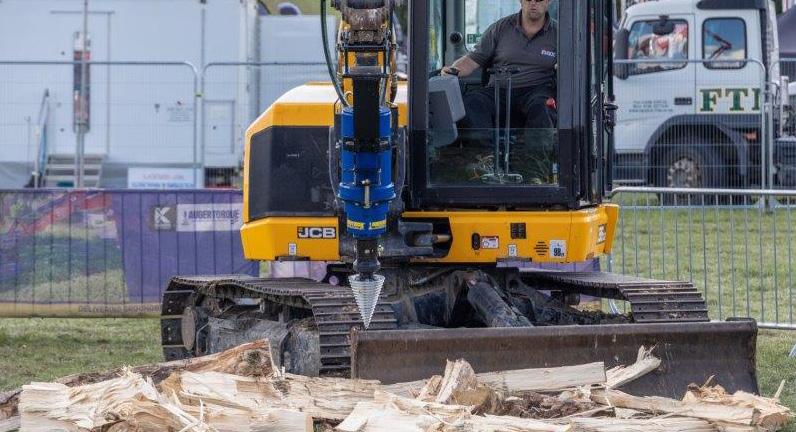
things fencing. All the major players in the fencing industry have already booked in. Visitors will be able to see all the very latest tools, equipment, machinery and materials, much of them shown working. We will host two UK championships on the Thursday and Friday of the event, sponsored by McVeigh Parker. One for quick fencing using metal posts and the other on the Friday for traditional post and wire fencing. The championships were extremely popular in 2022 so we have expanded the fencing arena to allow more two-man teams to compete. Go to the competitions and events page on the website if you would like to enter a team.
We have more events and competitions taking place than ever before. Our very popular world poleclimbing championships, sponsored by Husqvarna and the European chainsaw carving championships sponsored by A W Jenkinson and Tilhill return. We have a stellar lineup of carvers this year including five previous winners. If you watched the television carving competition A Cut Above last year we have three of the top four competitors including the winner Sam Bowsher and runner-up Chris Wood.
APF 2024 sees the welcome return after a number of years absence of the UK Forwarder Driving Championships in an enlarged arena and sponsored by Richard Court Forestry Engineering and Coombes Forestry. This will be a challenging course to determine the top forwarder driver in the UK. The woodland crafts area, probably the largest display of traditional woodland crafts anywhere in the UK, will be another major draw for visitors. Many of the crafts on show are very rarely seen and it is vital that these skills are kept alive. You can see everything from coracles to clogs, charcoal to wheelwrighting, willow
weaving to hazel hurdles. Want to know what a Sussex Pimp is? APF 2024 is the place to find out! The British horse loggers will be giving daily demonstrations and the opportunity to try your hand at handling a timber horse.
For the arborist we will have a high quality pairs speed tree climbing competition sponsored by Teufelberger and Pfanner with some excellent cash and equipment prizes on offer. This will be situated in the heart of the showground and offer exciting 360 degree spectating for visitors. You can enter in advance or on the day subject to availability. Equipment will be available to use if you haven’t brought your own.
If you have always wanted to try your hand at tree climbing but never had the opportunity then APF 2024 will be the place to do it. We will be running a have-a-go climbing area where you can learn to ascend into a tree with rope and harness under expert tuition.
We will welcome the return of the UK Lumberjacks to APF 2024. We will stage the UK championships with five disciplines including the two board climb and the underhand chop using axes and crosscut saws in a trial of skill and raw power. The souped up ‘hot’ saws will make their very noisy presence known!
If after watching the professional axemen you fancy a new challenge

then try your hand at axe throwing.
Confor will be hosting the seminar tent with some topical updates of all the major issues affecting our industry.
If you are looking to increase the exposure of your company at the show or launch a new product then there are still some high profile sponsorship opportunities available including entrances, the UK Lumberjack competition and tree climbing. We can design a bespoke package to fit your exact needs.
There is far too much to do in one day so come for two or all three days. We have a big campsite right next to the showground. Advance tickets and camping can be booked online via our website. Ragley Estate is only 40km from Birmingham airport and 320 Km from Fishguard.
Full details of the show, a list of booked exhibitors and details of the competitions can be found on our website www.apfexhibition.co.uk
If you would like to book a site then forms are available in the Exhibitor section of the website or contact the Exhibition Secretary Ian Millward on info@apfexhibition.co.uk or Tel: +44 1428 723545




BIOMASS RECOGNITION IN RENEWABLE HEAT TARGETS
Ireland currently has the lowest deployment of renewable heat in Europe at under 7%. Biomass contributes significantly to this low renewable heat share in Ireland. The scale of the heat decarbonisation challenge is enormous. The EU and Ireland have set ambitious targets for reducing fossil fuel use by 2030, and with net zero emissions targets by mid-century. It is increasingly certain that forestry will be a provider of construction materials and the use of forest by-products and residues to produce quality indigenous wood fuels will play a significant role in displacing imported fossil fuels.
Minister Ryan and his Government need to urgently recognise the significant role that solid biomass can play in decarbonising our energy uses. A basic first step is to recognise the potential of solid biomass in key Government policy documents and as a readily available decarbonisation option in achieving renewable energy targets. In addition, we need to also see an enhanced focus and increased promotion by Government, of the biomass support through the SEAI administered Support Scheme for Renewable Heat (SSRH).
Ireland has its own wood fuel quality scheme called the Wood Fuel Quality Assurance scheme (WFQA). This scheme is managed and administered by the Irish Bioenergy Association (IrBEA), which is the representative body for the bioenergy industry on the island of Ireland. Some support for promotion of the WFQA and wood fuel sector is provided by the Department of Agriculture, Food and Marine. All wood fuels certified must be produced sustainably in line with the latest EU sustainability requirements. The WFQA has now up to ninety certified supplier members across Ireland producing firewood, woodchip, wood pellets and wood briquettes. Fuel supplies are certified to produce wood fuel to the European EN/ISO 17225 fuel quality regulations. WFQA certification of wood fuel is a requirement for the Sustainable Authority of Ireland (SEAI) Support Scheme for Renewable Heat (SSRH). Certification is also required for the recently introduced solid fuels regulation.
THE WOOD FUEL SECTOR AS CUSTOMERS FOR FORESTRY
The network of WFQA members is nationwide and growing. For wood
fuel businesses to grow they need a consistent supply of raw material from forestry to produce quality wood fuel. In recent years, the main challenge faced by wood fuel producers has been the availability and consistency of supply of pulpwood, sustainable forest management thinning materials, residues and specified biomass harvesting material. WFQA members are interested in engaging and collaborating with forest owners, forestry companies and producer groups for the supply of wood pulp and forest thinnings. Wood fuel suppliers are also potential off takers of ash die back material and agriculture derived biomass from land maintenance and clearance activities. The www.wfqa.org website has a map of wood fuel suppliers and their contact details, for forest owners who are interested in collaboration.
Recently, IrBEA has published a guide to Specified Biomass Harvesting (SBH) as part of sustainable forest management. Ireland has grown a significant forest resource over the past century, with much of this forest resource now reaching harvest stage. Maximising the value of this harvest, while protecting the forest environment and optimising future crops are challenges that are being addressed through sustainable forest management practices.
Typically, forests are mostly grown for roundwood production. Specified Biomass Harvesting (SBH) refers to the planned and specified harvesting of tops and branches which are removed during normal felling operations for use in energy or other uses according to market demand. SBH also facilitates forest regeneration, more efficient subsequent crop management, and more uniform and higher quality crops in future cycles. IrBEA has published this technical guide aimed at foresters, forest owners and environmentalists to outline how SBH should be practised in a cost-effective and sustainable way. The IrBEA document has been welcomed by the Department of Agriculture Food and Marine, as it provides important information and guidance on energy assortment harvesting considering sustainable forest management.
As a biomass fuel, SBH displaces fossil fuels with significant greenhouse gas savings. This is achieved through fossil fuel displacement and avoidance of emissions from decaying residues on
site. Where SBH is harvested reforestation costs can be lowered and regeneration is more uniform. SBH has the potential to provide a significant amount of renewable fuel while facilitating regeneration and closing the forest cycle.
Irish foresters and forest owners, and those involved in forest certification now have guidance, which enables the sustainable harvesting, of an additional forest energy assortment through SBH. This publication brings together previous research work and summarises current best practice. Following the guidance will provide for better biomass and better future forests assurance to growers. This SBH document is a win-win for forest owners by improving returns, the environment by reducing replanting ground disturbance and windrowing requirements, and the State in facilitating the achievement of national bioenergy and climate change targets.
The document can be found on the IrBEA website at https://www. irbea.org/specified-biomass-harvesting-good-practice-guidance-energyassortment-harvesting-clearfell/
The SEAI administers the SSRH to support businesses seeking to decarbonise their heating with wood fuels. The SSRH provides a strong financial incentive over a 15-year period to convert fossil fuel boilers to wood chip and wood pellet boilers. The scheme is open to all non-domestic heat users including hotels, leisure centres, commercial buildings, intensive agriculture buildings (pig, poultry, horticulture and mushrooms) manufacturing and food processing to name but a few. To date, forty-one biomass projects have been supported by SEAI through the SSRH programme with huge potential for hundreds of more projects.
In 2022, the Department of Environment, Climate and Communication (DECC) introduced the solid fuel regulations. The predominant issues arising when using biomass as a fuel is the combustion emission of particulates (smoke). The regulations places limits on the moisture content of wood fuels that can be sold and used. Fuel quality and correct boiler design, installation and maintenance are critical components to control these emissions. Calls were made for many years by Irish suppliers of wood fuels in the Wood Fuel Quality



Assurance scheme, through the Irish Bioenergy Association, to set statutory limits on the moisture content of firewood offered for sale. Research proves that lower moisture content wood fuels significantly reduce particulate emissions from domestic stoves while increasing efficiency. Industrial woodchip and wood pellet boilers are designed to limit emissions through proper combustion control and by having particulate filters installed. Dry fuel burns better, more efficiently and produces far less smoke.
Biomass fuels can readily meet the challenges of domestic, commercial, and industrial energy demands, predominantly for heat. Industrial use of biomass for heat is familiar to the sawmilling sector, with many sawmills incorporating large-scale biomass heating and power systems. The sector is also very familiar with biomass CHP systems utilised to produce onsite electricity as well as providing large scale heat for onsite use. Large demand and higher temperature heat users such as food processing and the pharmaceutical sector will be difficult to decarbonise without the use of biomass.
Biomass and wood fuel production supports indigenous jobs and local supply chains through the provision of quality, dry, certified, and renewable fuels. Growing and developing the wood fuel sector have significant potential in Ireland. The importance of certified and quality wood fuels will be crucial for that potential to be realised. The Irish Bioenergy Association (www.irbea.org) through its lobbying and advocacy activities will continue to work on behalf of members to develop the Irish bioenergy sector. The Wood Fuel Quality Assurance (WFQA) Scheme is a key enabler for those who produce wood fuel and want to become a certified supplier, for new or existing consumers of wood fuel who want to find a local certified WFQA supplier and forestry owners who want to find new customers for their forestry outputs. Full details are available on www.wfqa.org
Seán Finan B.E. C.Eng MIEI Irish Bioenergy Association CEO seanfinan@irbea.org


As global calls for increased forestation rise, companies like McHale Plant Sales boost their portfolio with advanced machinery, aiming to meet the burgeoning demand for sustainable forestry practices.

As governments respond to the urgings of climate scientists or, as the case may be, take flight in order to distance themselves from the wrath of global warming protesters, one thing seems certain: the call to grow more trees and expand the amount of land we allocate to forestry is becoming louder and louder, embellished with an increasing air of urgency.
In forestry, the heat is on! For those who earn their living from forestry, including the many whose business model is built around the harvesting of timber, earnings indicators must surely point in an upwards direction. Significant amongst them are the machinery suppliers whose equipment contractors rely upon a growth in demand from contractors to carry out their trade: the threesome of the timber harvesting business being Komatsu, John Deere and Ponsse.
Of the three, Komatsu forest equipment distributor in Ireland, McHale Plant Sales has introduced an additional and distinctly unique machine to their line-up of forestry equipment: the German Prinoth range whose addition to the McHale range has secured for them a line of products with a large part to play in the forestry sector.
Complementing other products in their portfolio, the Prinoth line-up includes machines and attachments that cater for the needs of
forestry managers, contractors and those charged with protecting and managing the landscape. Typically, applications for which they are most suited include: Biomass Harvesting, Plantation Management, Forestry Maintenance, Right of way maintenance, Landscaping, Land clearance, Stump removal, Firebreaks and prevention of fires, and the Tackling of Diseased trees.
Of particular interest to contractors anxious to attract new business and build-on and expand their value to clients, the range includes one item in particular (and there are others)…the Prinoth M450E -1100 hydraulic mulcher for universal use with excavators of 12 to 18 metric tons in the 60-120 HP power class.
With a working width of 1100mm, an overall width of 1382mm, height of 868mm, weight of 690kg, and a volume flow of 100-200 l/ min, the Prinoth M450E -1100 hydraulic mulcher is the fit-for-purpose tool across a number of forest applications.
Also impressive within the Prinoth range is a highly versatile ‘low ground pressure’ tracked dump truck. First to recognise its potential was leading civils and groundworks specialists, Priority Construction, whose purchase of two tracked units were recently put to work on a major landfill project in Allenwood, Co. Kildare.
Especially useful when it comes to stump grinding, forest and land
clearance, right-of-way maintenance, and the creation of forest fire breaks, Prinoth range of uses embraces a host of special applications of which embankment, landscape and habitat maintenance, re-naturalisation and composting are but a few.
Adding to McHale Plant Sales burgeoning presence in forestry , agricultural and environmental sectors generally, their appointment as Prinoth distributors is one that their sales director, Denis McGrath says: “has added depth to our operations at a time when the establishment and maintenance of forests, the protection of landscape, waste recovery and ecological issues generally have become matters of policy and public concern”.
“For ‘mulch it, trim it, grind it, churn it’ applications, the Prinoth Raptor and T-Rex range of brush cutters, site preparation, and tracked carrier vehicles are also worth noting as are their rapid mulching units for creating an optimum environment for plant growth and reforestation,” McGrath added.
“In addition, the range includes equipment designed to work on uneven ground, sloping terrain, and difficult-to-reach worksites without causing ground damage. Used in many different industries and applications, an ability to operate in snow conditions, to climb gradients up to 60% steep, and a usefulness in forest firefighting situations,” he said.
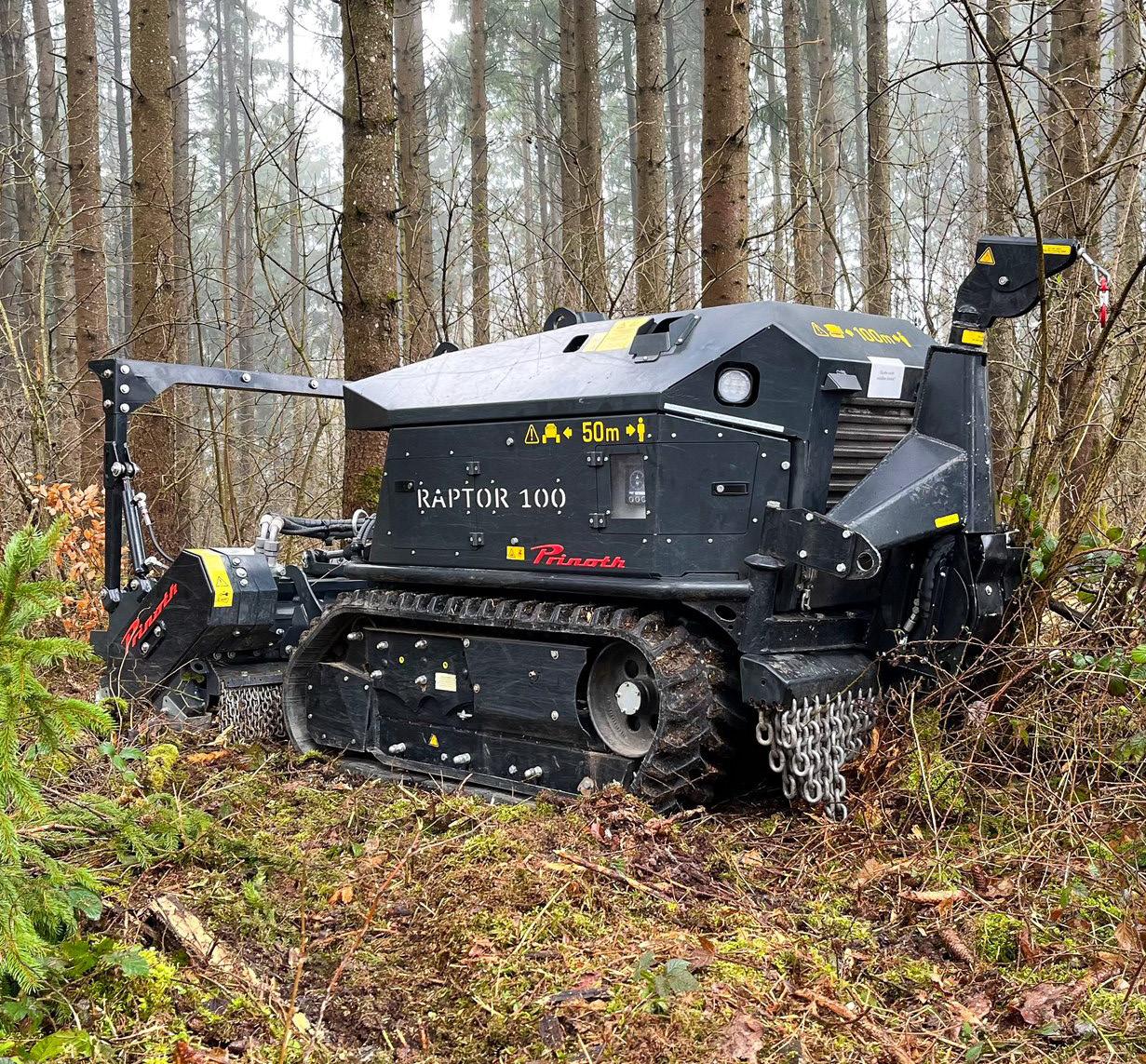



Worrell Harvesting stands at the forefront of innovation in biomass harvesting, offering sustainable solutions that address the growing demand for renewable energy sources. With a commitment to excellence and environmental stewardship, Worrell Harvesting has earned widespread recognition for its pioneering technologies and practices. In this exploration, we delve into the company’s core initiatives, including its KZR certification, utilization of Log-watch technology, and specialized biomass harvesting techniques. Through using these techniques Worrell Timber Group are able to maximise the amount of volume on sites by using Specified Biomass Harvesting and keep full traceability of products.
Established in 1988 Worrell Harvesting initially focused on traditional logging practices starting out with chainsaws and purchasing their first machine in 1992. However, recognizing the pressing need for sustainable energy solutions, the company swiftly pivoted towards biomass harvesting. Today, Worrell Harvesting
operates across diverse landscapes of all forests offering comprehensive biomass solutions to clients worldwide.
At the heart of Worrell Harvesting’s operations lies its commitment to quality and sustainability, epitomized by its KZR certification. The KZR certification, represents the company’s stringent standards for biomass products. To attain this certification, Worrell Harvesting put years of work in to get their company to the level required to maintain this high standard WTG employs a multifaceted approach that includes:
1. Sustainable Harvesting Practices: Worrell Harvesting adheres to sustainable harvesting practices, ensuring minimal impact on ecosystems. By selectively harvesting biomass materials and implementing reforestation initiatives, the company maintains the ecological balance of forested areas.



2. Drying control: Worrell Harvesting utilizes advanced technology to process biomass materials efficiently. This ensures optimal moisture content, enhancing the energy efficiency and combustion properties of the biomass products.
3. Quality Control Measures: Stringent quality control measures are implemented throughout the production process to uphold the integrity of KZR-certified products From initial harvesting to final delivery, every step is meticulously monitored to meet the highest standards which benefits the Grower of a job well done.
The KZR certification not only assures customers of product quality and a job well done but also underscores Worrell Harvesting’s commitment to sustainability and environmental responsibility.
LOG-WATCH: MONITORING FOR ENHANCED EFFICIENCY
Central to Worrell Harvesting’s operational efficiency is its utilization of Log-watch technology. Developed in-house by a team of engineers and data scientists, Log-watch is an integrated monitoring system that tracks various parameters during the biomass harvesting process. Key features of the Log-watch system include:
1. Real-Time Data Collection : The Log-watch system allows full traceability of timber throughout the forest harvesting. With emails and texts coming in to track loads and a portal to recount all loads that left the site.
By integrating log-watch technology into its operations, Worrell Harvesting achieves unparalleled precision and efficiency in timber traceability. Assuring the grower is fully aware of all transport to his timber.
In addition to its technological innovations, Worrell Harvesting
employs specialized techniques tailored to different biomass sources. These techniques are designed to maximize yield while minimizing ecological disturbance. Some notable examples include:
1. Forest Residue Recovery: Worrell Harvesting utilizes advanced equipment such as state of the art Harvesters, forwarders and chipper trucks to recover forest residues, including branches, tops, and smalldiameter trees. These materials, often left behind during conventional logging operations, are transformed into valuable biomass feedstock, reducing waste, enhancing resource utilization and allowing more revenue for growers.
By tailoring harvesting techniques to specific biomass sources, Worrell Harvesting maximizes resource recovery while minimizing environmental footprint, thereby promoting sustainable bioenergy production and getting the most revenue from every site.
By using Worrell Timber Group and the Specialized Biomass Harvesting method not only do you enhance the possibility of getting more revenue from your forests but you save money as you don’t have the cost of windrowing your forest.. This means your forest has a vast area of nutrients now meaning you have allowed your forestry the strongest replantation.
In conclusion, Worrell Harvesting stands as a beacon of innovation in the field of biomass harvesting, driven by a steadfast commitment to quality, sustainability, and technological advancement. Through initiatives such as KZR certification, logwatch technology, and specialized biomass harvesting techniques, the company not only meets the growing demand for renewable energy but also contributes to a greener, more sustainable future. As the world continues to embrace the transition towards clean energy sources, Worrell Harvesting remains at the forefront, shaping the landscape of biomass utilization for generations to come.


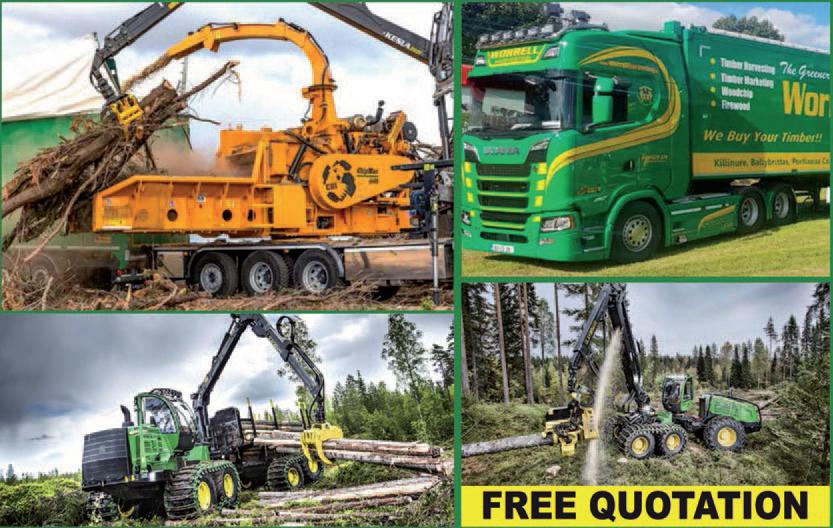


The Government recently approved a new Climate Action Performance Payment of €5,000 per hectare for ash forest owners affected by ash dieback.
The payment will be made available to grant aided forest owners who either have or will clear their sites and replant through one of the Departments Ash Dieback Reconstitution Schemes.
Ash forest owners who have not already entered one of the reconstitution schemes for ash dieback are encouraged to join the Reconstitution Ash Dieback Scheme (RADS) 2023-27 to become eligible for the new payment.
Ash Forest Owners will be eligible to receive the additional Climate Action Performance Payment (CAPP) of €5,000 per hectare when their sites have been cleared and they have carried out replanting, in accordance with the terms and conditions of the Reconstitution Ash Dieback Scheme.
This will be paid in three instalments, as follows:
• €2,500 can be applied for after 1st grant on Ash reconstitution scheme
• €1,250 can be applied for after 2nd grant on Ash reconstitution scheme if the forest owner is out of premiums or at the end of their
premiums if they are still in receipt
• €1,250 can be applied for the following year
Note: The Climate Action Performance Payment will be exempted from income tax by virtue of section 232(2) TCA.
WHAT RECONSTITUTION SCHEMES MUST I HAVE JOINED OR MUST JOIN TO QUALIFY FOR THE CLIMATE ACTION PERFORMANCE PAYMENT
If you have previously joined one of the following Department schemes you are eligible for the CAPP payment, provided that you have replanted:
• Reconstitution Scheme Ash Dieback 2013
• Reconstitution and Underplanting Scheme (Ash Dieback) 2020
• Interim Reconstitution Scheme for Ash Dieback 2023
• Reconstitution for Ash Dieback Scheme (RADS) 2023 – 2027
HOW TO APPLY FOR THE CAPP INSTALMENTS?
The Department is developing an easy and accessible system to apply for payments which we expect to roll out as soon as possible. Details of how to apply will be provided by circular and through updated Frequently


The Komatsu harvesters have been in the forefront of productivity enhancing technologies for decades, and the best days are still ahead. In everything from smarter thinning to heavy duty final felling. Choosing a red harvester will get you maximised productivity from day one and many years to come. Komatsu offers an impressive line-up of market-leading harvesters that are paired with equally impressive services. The power to deliver.







Asked Questions on our website.
The Reconstitution Ash Dieback Scheme 2023-2027 is now open. To apply for support under this scheme, contact a Registered Forester and ask them to make an application on your behalf. Details of this scheme and a list of FAQs on the Climate Action Performance Payment Scheme is available at gov.ie/AshDiebackSupports
Owners of forests affected by Ash Dieback may apply for support under the Reconstitution Ash Dieback Scheme 2023-2027 (RADS), which opened on the 24 July 2023 as part of the New Forestry programme. RADS supports owners of ash plantations to clear their site and replant with trees in line with the new Forestry Programme.
RADS supports owners of ash plantations to clear their site and replant with trees in line with the new Forestry Programme.
To mitigate the cost of clearance there has been a 100% increase in the site clearance grant rate from €1000 - €2,000 per hectare.
For applicants whose sites are still in premium they will continue to receive the premium due for the remaining years.
They will also receive a once-off top-up payment equivalent to the difference between the existing premium and the associated new Forest Type (FT) premium they opt for under the new Programme.
We have provided a couple of examples to assist in understanding the funding available when opting for a specific Forest Type.
If you’re interested in reading more about the Forest Types available under the new afforestation programme and their respective annual premiums, which can last up to 20 years, check out how much you could get paid by visiting gov.ie/forestry
To download the Farm Forestry Booklet, see gov.ie/forestrybooklet



For more information visit gov.ie/ashdiebacksupports

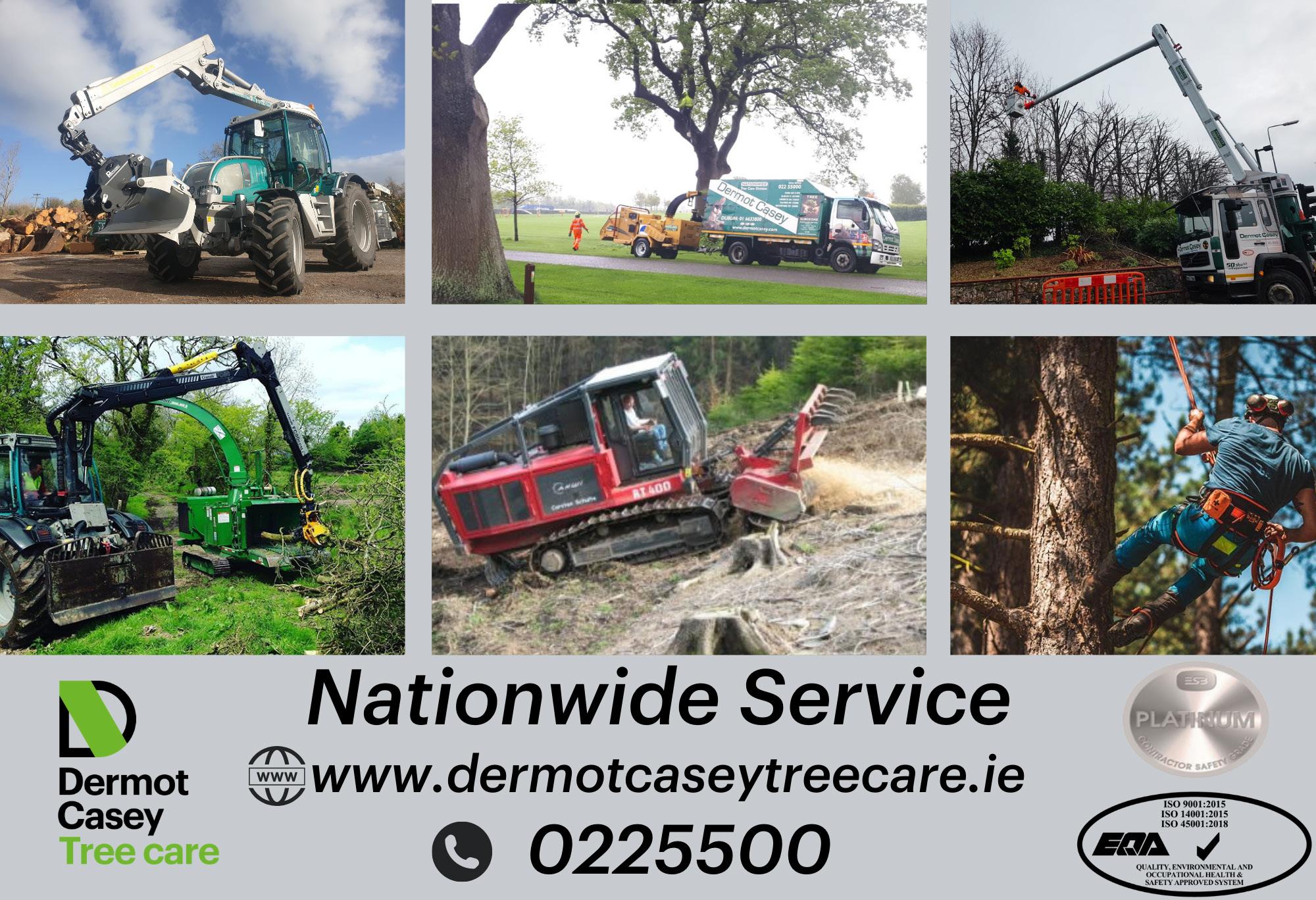

As the exclusive provider of arboriculture education in Ireland, our mission revolves around ensuring a robust and sustainable inflow of new professionals into the field, irrespective of their background or level of previous experience.

We are committed to offering ample opportunities for individuals to build long, rewarding, and successful careers centred around Irelands trees and amenity woodlands. By championing arboriculture as a profession, we aim to reshape perceptions, making it an appealing and diverse career choice for school leavers or those considering a career transition.
The QQI Level 6 Advanced Certificate in Arboriculture serves as a pivotal stepping stone, equipping individuals with the necessary skills and knowledge to embark on a fulfilling career journey. For those contemplating a career in arboriculture, this editorial presents some potential pathways and outlines the educational and experiential requirements to guide you toward your career goals.
The nursery sector serves as the backbone of arboriculture, responsible for nurturing the wide variety of trees that are essential to maintain our historic parks and gardens, amenity woodlands, and urban landscapes. Cultivating large, semi-mature trees capable of being transported across Ireland and beyond demands a deep understanding of arboriculture coupled with many years of professional experience. This encompasses expertise in soil science, dendrology and tree biology, as well as proficiency in tree pruning and surgery – both above and below ground. Our students benefit from a comprehensive curriculum covering both theoretical knowledge and practical skills, including seed tree and
provenance selection, seed harvesting and storage, and effective tree production methods, all taught at our purpose-built nursery facility.
The role of a climbing arborist is highly specialized, requiring advanced skills in tree climbing and in conducting tree surgery and dismantling tasks. These professionals play a critical role in maintaining tree health, safety and aesthetics across urban and rural environments. From pruning and shaping to tree felling and disease control, climbing arborists handle a diverse range of responsibilities. As apprentices, our students work closely with experienced teams and receive handson training in tree climbing techniques, equipment handling, safety protocols and tree pathology at our specialised training centre. The demand for competent and qualified climbing arborists remains very high across the island of Ireland and overseas.
In the Utility Vegetation Management (UVM) industry, arborists play a vital role in ensuring the safe and efficient delivery of essential utilities such as electricity, communication, and transportation infrastructure. Utility arborists must possess a comprehensive understanding of UVM programs, industry best practices, and the principles of environmental stewardship. Tasks may include assessing vegetation along utility line easement strips, obtaining necessary permissions, and operating specialized off-road equipment for vegetation removal. Through our
apprenticeship program, students gain practical experience in tree climbing and operating mechanised equipment, preparing them for the challenges of working at heights in various high-risk environments.
Tree and Woodland Officers, also known as arboricultural officers, are employed by local authorities to safeguard tree populations and to enhance their environmental and wildlife benefits. Their responsibilities include protecting trees during development and demolition projects, from pests, diseases, and mismanagement, as well as designing and overseeing new tree planting projects. They advocate for trees by engaging with stakeholders such as residents, community groups, developers, and policymakers, promoting the importance of green infrastructure. In times of emergencies like storms, tree officers prioritize maintenance tasks based on public safety concerns. The number of tree officers is expected to rise steadily in the coming years, reflecting the growing emphasis on environmental conservation and sustainable (sub)urban landscapes.
A Consultant Arboriculturist is a seasoned professional who, following advanced education and training, provides expert management advice on trees, particularly in settings where trees contribute to public enjoyment and well-being. Consultants offer assessments on tree health and hazards, provide recommendations for tree care, and may investigate cases involving trees and structural damage or accidents.

They also offer guidance on planning regulations, tree preservation laws, and tree protection on construction sites. Some of our students opt to serve their apprenticeship with independent arboricultural consultancies, with aspirations to pursue higher education and to advance to consultancy roles upon graduation.
Arboriculturists are increasingly being called upon to help preserve Irelands veteran and champion trees. These trees are not only natural wonders but also hold significant cultural and ecological value. The fact that over 14,000 champion trees have been recorded demonstrates the rich diversity and history of Ireland’s arboreal heritage. Arboriculturists play a vital role in providing expertise to protect these trees, whether it’s through advising on proper care, assessing risks to their health, or advocating for their continued protection and preservation. In conclusion, arboriculture offers a dynamic and fulfilling career with diverse opportunities for growth and meaningful environmental impact. Whether you’re interested in nursery production, tree climbing, utility management, consultancy or conservation, the field welcomes passionate individuals committed to nurturing and preserving our arboreal heritage and treed landscapes.
Further information on arboriculture education, training and careers: Jeremy Ryan – National Programme Coordinator QQI Level 6 Advanced Certificate in Arboriculture arbapprenticeship@gretb.ie


The 574F is a 14-tonner that punch es way above its weight with a trac tive drive force of 195knm. Power reliability and fuel efficiency are the three key ingredients that make the 574F stand out. Sharing the Volvo Penta engines with our harvesters means high fuel efficiency, which in turn increases profitability. Powerful crane options from Epsilon and Cranab are also available. Driver comfort comes with a high-visibility cabin and cushion drive damping system. Increase your profits with the Ecolog 574.





The EcoLog 688 powered by a tier V Volvo Penta engine is the most cost efficient harvester in its class on the market. With fuel consumption of 13-14 Litres per hour in the toughest of clearfell, on steep terrain, the EcoLog 688F cannot be beaten on fuel consumption. In todays market with the rising cost of fuel, the EcoLog 688F will save you €15,000-20,000 per year in fuel costs when compared to other harvesters in this class.
The innovative design further leads to increased efficiency and a reduction in running costs. The ergonomic design of the cab ensures operator comfort and ease of driving.
The Log Max head is a perfect match for the EcoLog 688F, it’s simplistic and clever design results in fewer hose breakages and considerably less waste of hydraulic oil compared to competitors.
Through exceptional ground-clearance, reliability, serviceability and a powerful harvester-crane you control your destiny to high productivity and a profitable total cost of ownership. Don’t burn your profits, call Liam on 086-607954 to discuss your new EcoLog today.


Dr David Gil-Moreno and Dr Patrick McGetrick give an insight into the quality of tree species grown in Ireland.
The Wood Properties for Ireland (WoodProps) programme, funded by the Forest Sector Development Division of the Department of Agriculture, Food and the Marine (DAFM), is coordinated by the Timber Engineering Research Group (TERG) at University of Galway. Since 2017, this programme has been addressing issues related to the characterisation of timber species in Ireland with a particular focus on timber properties and strength grading.
For a long time, only Sitka spruce (Picea sitchensis (Bong.) Carr) could be strength graded in Ireland, either visually or by machine. Despite that, information on some properties relevant to structural design, such as tension strength, was still limited. The work conducted at WoodProps addressed this gap in the knowledge, leading to improved characterisation of the species that now enables better utilisation of the species’ structural performance. Nevertheless, relying solely on one species for timber supply has raised concerns due to recent pest and disease outbreaks, as well as the growers concerns on the long term suitability of affecting other species under the impacts of climate change. Introducing more species to the market offers customers greater choice and access to products better suited for specific uses.
Norway spruce (Picea abies (L.) H.Karst) is already often mixed with Sitka spruce in both the forest and the sawmills, resulting in the species combination commercially known as “British spruce”; note that the name has nothing to do with the origin of the timber. The combination is possible due to the similarity of the structural properties, namely modulus of elasticity, strength and density. These properties collectively constitute what we typically define as timber quality for structural
applications, of which the C16 strength class, commonly achieved in grading Irish Sitka Spruce, is just one example.
Other species that could provide a reserve of timber and a wider range of end uses include Douglas fir (Pseudotsuga menziesii (Mirb.) Franco) and larch (Larix spp). Since 2018, as a result of collaborations between TERG and Edinburgh Napier University in Scotland, as well as the involvement of the forest industry, Douglas fir grown in both countries can now be machine strength graded. This is possible due to the similar timber characteristics of the species grown on both sides of the Irish Sea. In general, the subsamples of Douglas fir studied on the Woodprops programme had better mechanical properties than Sitka spruce, which together with its slightly higher natural durability, may contribute to play a key role in end uses requiring higher performance. In 2020, similar work was undertaken to enable the strength grading of larch. The species produced higher timber quality than spruce or Douglas fir. Unfortunately, larch is no longer included in the Irish afforestation program due to the outbreak of the Phytophthora ramorum pathogen, but TERG aimed to give the best possible use to the felled trees and not to under-utilise them. Regrettably, the relatively small and dispersed volume of these two species in Ireland may not always make grading these species on their own attractive to sawmills and therefore they may not make it to the market. Another option to concentrate the timber volume and increase the use of the local timber resources is to enable grading of the two species together, either mixed in production (as a species combination) or not (as individual species). Thus, between 2022 and 2023, WoodProps work addressed the grading of the species combination Douglas fir with larch for the first time in Europe, and

Destructive bending test on birch specimen at University of Galway for determination of mechanical properties. More information on WoodProps Programme at https://www.universityofgalway.ie/terg/activeprojects/woodprops/


precisely for the grading area formed by Ireland and the UK.
Another species studied within WoodProps was Scots pine (Pinus sylvestris L.), whose timber is also known as red deal. It is the only native coniferous species in Ireland that reaches dimensions suitable for the timber market. The species is broadly used in Europe in construction, and although it was the main conifer in Ireland until about 1950, the area currently grown is relatively small (1.2% of the forest area). The 160 timber pieces examined achieved slightly better quality for structural applications than Sitka spruce, however this number of pieces is fewer than the 450 that would be required to derive the models that govern machine strength grading. It is also worth noting that the sampled trees were 77 years old, whereas the typical rotation length for Sitka spruce ranges from 35 to 45 years.
Regarding hardwoods, the amount of suitable hardwood for structural applications is relatively small, particularly if we consider the lack of straightness of the Irish-grown species. Birch (Betula spp.) is the most common broadleaf species (7.2% of the total forest area) in Ireland. Ongoing work in WoodProps is examining the structural properties of the species, including non-destructive acoustic measurements carried out on the standing trees and felled logs. While the dataset studied is relatively small (circa 100 pieces), from two young plantations aged 22 and 27 years, preliminary results show that birch can produce timber of a quality somewhat comparable to that of Douglas fir. The results of this study will provide guidance on the best use of these species coming to harvest age and add useful knowledge to the Birch Improvement Programme carried out by Teagasc.
Further research should examine timber under different silvicultural regimes, particularly those that may lead to a reduction in the size of knots in Douglas fir and Scots pine. A summary of the WoodProps programme and the fundamentals of strength grading of timber can be found in COFORD Connects, Processing/Products No. 52 http://www.coford.ie/media/coford/content/publications/projectreports/ cofordconnects/Woodpropsprogrammefinal030622.pdf. (Gil-Moreno et al 2022). More information on Forestry & Timber Properties of Irishgrown species can be accessed at: https://www.universityofgalway.ie/terg/ publications/topic/
David Gil-Moreno, Conan O’Ceallaigh, Dan Ridley-Ellis, Annette M. Harte (2022).


































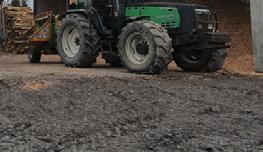



Established in Portarlington, Ireland in 2004, Robinson Distribution Ltd. has continuously expanded and developed into a market leading trailer and crane manufacturer, supplying an ever growing customer base in the transport and forestry sector across Ireland, the UK and mainland Europe.


Robinson is an ambitious family owned and managed business with a long and proud history of transport, agri–products and forest machinery. roughout its history, Robinson’s has been an innovative company with continuous research and development being at the core of the business. Our track record of trailer and crane design and manufacture provides us with a strong competitive advantage in terms of new product development. All our trailers and cranes are designed and customised by our team of experienced engineers. Each product is manufactured to meet the speci c needs of the operator which is backed up by our strict quality procedures. Our attention to detail enables us to build a product that will simply outlast others with superior strength and durability. Our success has been built on an ethos of serving our customers with quality transport solutions, e ciency, and reliability and also by ensuring there is a complete focus on customer satisfaction at the core of everything we do.
“Our state of the art production plant is one of the most modern trailer manufacturing facilities in Ireland”
With ongoing investment, research and development; the company has continuously developed a modern manufacturing facility designed to manage the expectations of today’s transport sector. Our state of the art production plant is one of the most modern trailer manufacturing facilities in Ireland.
As a business we continuously innovate by applying cutting edge design aligned to the speci c and changing requirements of each trailer’s function with the aim of saving fuel, maximising payloads, increasing manoeuvrability and exibility, improving safety whilst ensuring we comply with all legal regulations Our focus is on building the highest quality trailers to the highest manufacturing standards. We achieve this through a combination of: Engineering & Design Excellence, Advanced Technology, A Wealth of Experience
e company now boasts an ever increasing customer base across Ireland, the UK and Europe. Our goal is to support our customers in their goal of purchasing trailers and equipment that will provide a strong return on investment and augment the success of their business.
Robinson manufactures a wide range of trailers and cranes, all designed to meet the speci c needs of our customers, with speci cations across three main categories including; On Road Trailers: Bulk Tipper Trailers, Platform Trailers, Container Trailers
Timber Trailers: Centre Axle Drawbar Trailers, Semi–Trailers, Super Structures, Turntable Trailers
Cranes: e company also supplies, custom manufactures and ts cranes, including brands such as Robinson, Loglift, Kesla, Liv.

Our new timber cranes are now operating out in the Irish forestry industry with very positive feedback from our customers. We manufacture two models of crane to choose from, a 9 tonne and a 12 tonne. ese both come in a single and double extension model. Our cranes have the highest quality nish with investments in our own forms for castings in Scandinavia, Swedish Steel, Parker Hydraulics, Indexator Rotators and Links, Tamtron and Maxi Cap Weighting Systems and high power LED working lights. e high standard of nish extends to the main components as they are blasted, primed and painted which presents a huge advantage over competing products. Robinson also supply their own grapple with its crane. is is a Robinson 42 Grapple which has a gripping area of 0.42m2. Robinson’s also manufacture their own Robinson One Piece Timber Bunk. ese are made of specialised Swedish Steel. Due to the weight and price of the Robinson Bunks, they can now compete aggressively in the market place, making them very popular with customers.
For a discussion about your needs and how Robinson would be pleased to assist you, please call us today on Tel: 057 86 24832 or email scott@robinsondistribution.ie You can visit our website on www.robinsondistribution.ie
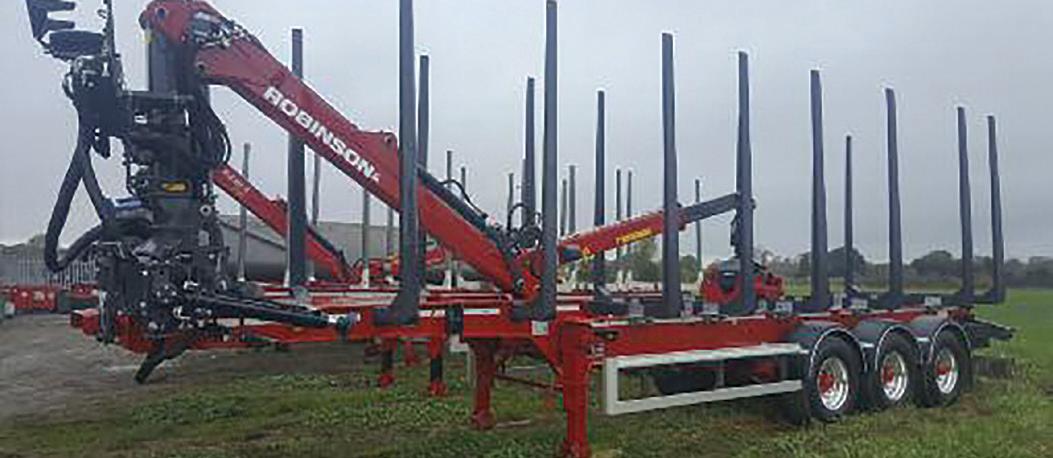

A recent study tour saw how technological solutions and a collaborative approach are helping Scotland’s drive for sustainable timber transport. Noel Kennedy, Teagasc Forestry Development Officer reports.
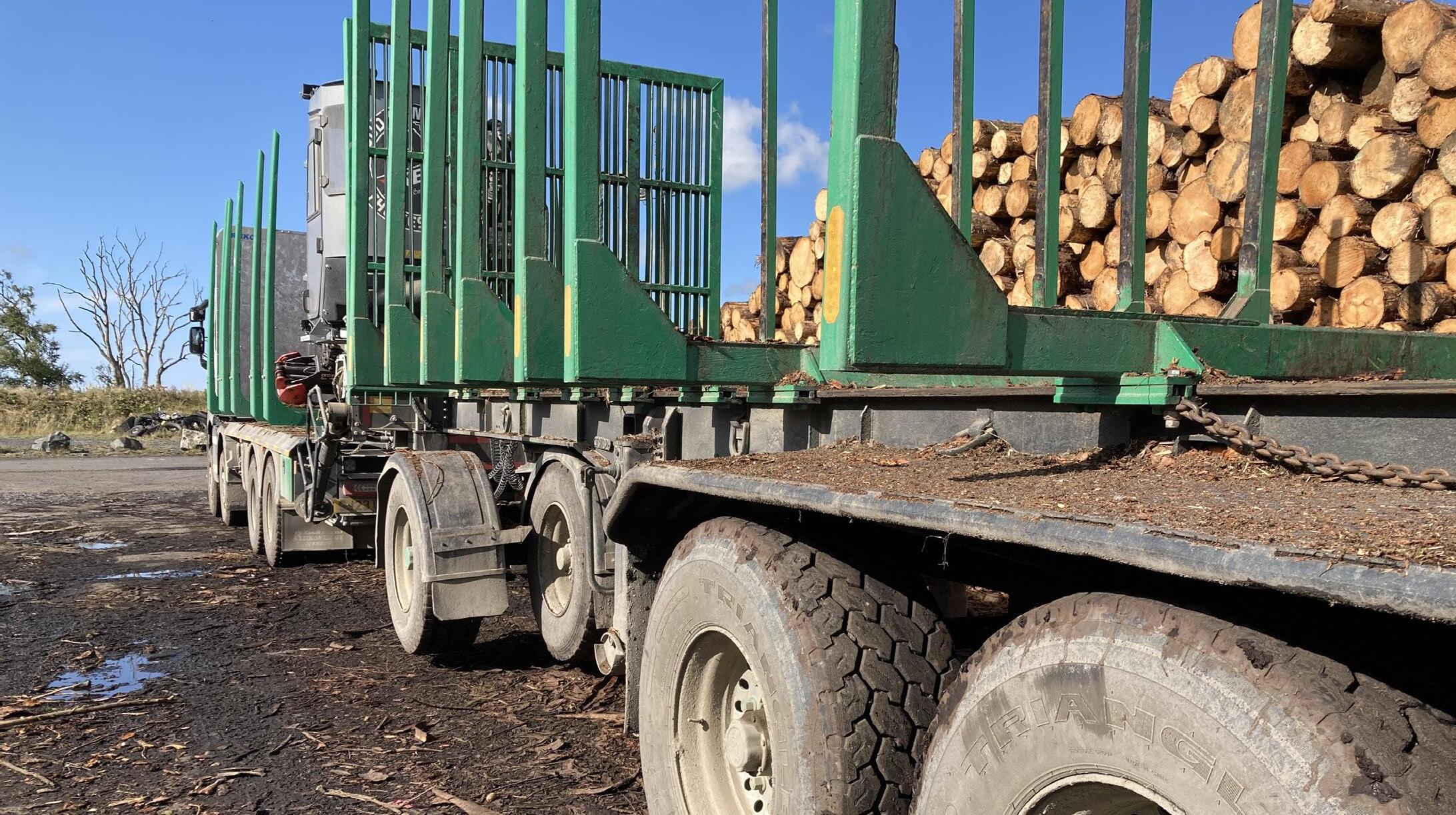
Scotland’s forestry sector is often referenced in Ireland because of the many similarities between the two countries including the importance of Sitka spruce for commercial timber production.
With a forest area of 1.4 million hectares, an annual timber harvest of 6.8 million tonnes and forests extensively planted on similar marginal land in isolated rural communities, Scotland also faces significant challenges for the sustainable transport of timber.
In September, members of the Forest Industry Transport Group travelled to Scotland to explore sustainable timber transport models and technologies being used in timber harvesting operations and to inform their potential application to address similar sustainable timber transport challenges in Ireland.
The Forest Industry Transport Group includes representatives from a range of state and private forestry stakeholders. The objective of the Group is to ensure that Ireland’s timber industry can access and market our timber resource in a sustainable manner with minimal impacts on the public road network, local communities and the environment.
Scotland’s timber transport challenges closely mirror those experienced in the transport of timber from Ireland’s forests. These include:
• Hard to access locations
• Sensitive environments
• Fragile public and private roads
• Rural communities
• Large timber volumes
• Forest road network maintenance
Led by Neil Stoddart of Creel Maritime who provide services for the shipping and logistics sectors, specialising in forest products, the FITG group visited a number of working forests on the west coast and in the central highlands to see the timber transport solutions being employed to address these challenges.
Low Ground Pressure (LGP) systems – Distributing the weight of a timber truck and its timber load over a larger surface area is a proven way to reduce the potential damage to roads.
In forest timber transport using a specialist LGP truck.
In this case a new Renault 8X8 truck fitted with a dolly wheel system (Photo 1) to distribute weight more evenly was hauling 120,000 tonnes of timber in 55 tonne loads through the harvest site to a stacking area where it was collected by road going timber lorries. Enabling all weather and all year round forest haulage this in forest transport system reduces road wear and fuel consumption with economic and environmental savings in the longer term.
Central Tyre Inflation (CTI) (Photo 2) This is an established and effective LGP automated tyre pressure system which has been widely
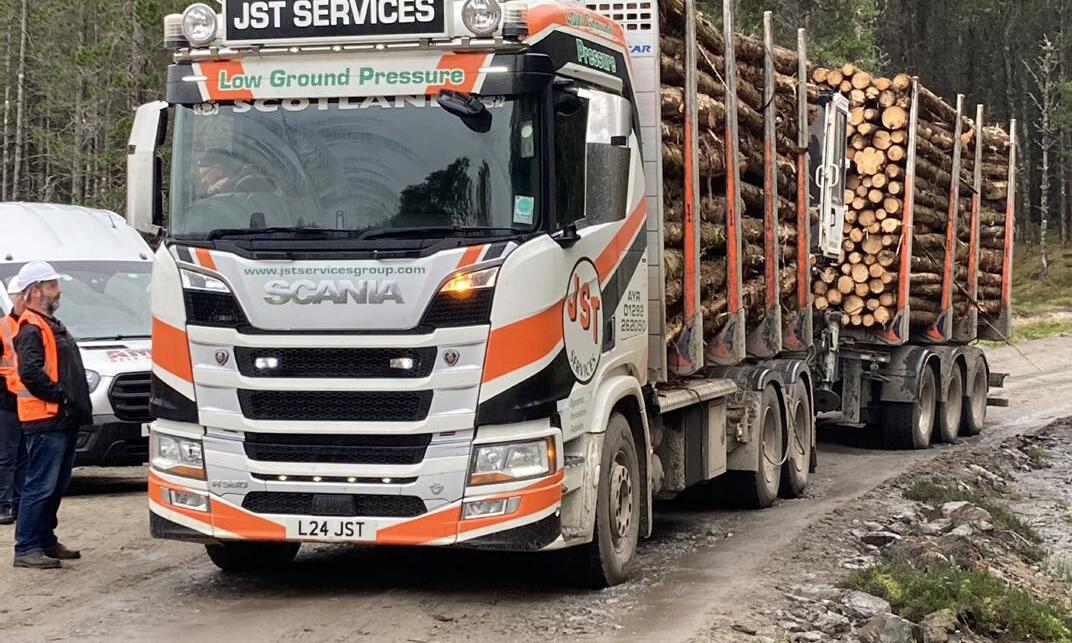

adopted by the Scottish timber haulage fleet. We saw a Scania timber truck fitted with the system which allowed the driver to remotely reduce tyre pressure thereby reducing road wear both on the forest road and outside the forest on weaker “fragile” roads. On “better” roads the system automatically re-inflates the tyres to normal road going pressure. In Ireland’ s new 2023-27 Forestry Programme a CTI grant is included as part of the Innovative Forest Technology Scheme.
Many of Scotland’s production forests are located in difficult to access and sensitive locations along the rugged west coast or inland lochs. Scottish Government funding supports projects to facilitate the transportation of timber by sea.
Floating pontoons (Photo 3)
This is the most significant technological and engineering solution being utilised with support through the Scottish Government’s Timberlink project. In the coastal area of Gortenorm we saw a recently constructed floating pontoon which was enabling the loading of a small freight boat with up to 2000 tonnes of timber from the land. The boat was then delivering the timber to local “short” ports for road transport onwards with considerable environmental benefits.

Loading jetties and custom built barge (Photo 4)
To facilitate the harvesting of non-native trees for the Loch Arkaig Caledonian pine restoration project and the barging of the timber across the loch, a number of loading jetties were built and a custom built barge assembled on site. This operation will continue on a seasonal basis for the next five years.
Environmentally friendly forwarder
A forestry forwarder is a specialised low ground pressure machine that collects the logs in the forest and brings them to the forest road. In acknowledgement of the high environmental sensitivity of barging a fully loaded forwarder across Loch Arkaig, Creel Maritime in association with John Deere developed the “world’s most environmentally friendly” forwarder which runs on HVO fuel and Bio oil lubricants.
Scottish Government support
Timberlink - is a public service contract, funded by the Scottish Government through Scottish Forestry to support short-sea coastal shipping of roundwood from Argyll to Ayrshire and reduce the environmental impacts of timber transport. Since it began operation on 2000 it has supported the transport of 1.3 million tonnes of roundwood by sea, reducing timber lorry journeys by 9.9 million timber and CO2 savings of 18,500 tonnes.
TRANSPORT BY ROAD
Timber Traffic Improvement Plan
A number of the harvesting sites visited had Timber Traffic Improvement Plans on the agreed timber haulage routes. The improvement works received significant funding though the Scottish Government’s Strategic Timber Transport Fund (STTF).
Pre cast concrete road bridges (Photo 5)
In Gortenorm we also saw a 15 metre wide single span pre cast concrete and steel bridge built as a critical element of the forest road infrastructure facilitating timber transport to the pontoon. The use of pre-cast concrete for bridge and other forest construction removes the

environmental risk from the use of more traditional poured concrete.
Scottish Government support
The Strategic Timber Transport Fund - Since 2005, the Strategic Timber Transport Fund (STTF) has financed projects that facilitate the sustainable transport of timber in rural areas of Scotland and deliver benefits for local communities and the environment through innovative projects and partnerships. Annual STTF funding ranges £5-7 million per annum and to date has provided £65 million to support 381 projects.
A successful STTF application prompts the development of a local Timber Traffic Improvement Plan with agreed haulage routes,
upgrading of local roads and bridges, involvement of Timber Transport Officers to resolve operational issues and clear community benefits.
As a group we were impressed and inspired by the scale and success of the forestry operations we visited and in particular by the innovation, collaboration and professionalism of the various stakeholders in the face of significant physical and environmental challenges.
The positive attitude of Scottish Forestry and the effectiveness of their STTF and Timberlink projects were recognised as critical in achieving sustainable timber transport and supporting the forest industry and rural communities and this is an area that FITG will be actively exploring in an Irish context.






Site Clearance (excavators 5T – 24T, tractor & dump trailer)
Standing Timber Purchasing and Marketing of both broad leaves and softwoods

General Haulage and Timber Haulage Weekly Reports & Machine Printouts available on request



Office: +353(0) 870640161
Harvesting & Extraction: +353(0) 872236454
Email: bts@live.ie
Website: www.brophytimberservices.ie

















There is intensive research ongoing in Ireland to identify Ash trees tolerant to Ash Dieback disease. Dr.Dheeraj Rathore, Teagasc Tree Improvement Researcher updates the progress of this research.
Ash (Fraxineus excelsior) trees play a crucial role in Ireland’s ecosystem, economy, and cultural heritage, serving as habitats for diverse wildlife, contributing to carbon sequestration, providing valuable timber for Hurley making, and featuring prominently in folklore and traditional crafts. It is the second most abundant species in hedgerows. However, the continued presence of ash is threatened by the persistent attack of ash dieback disease, a devastating fungal disease caused by the invasive pathogen Hymenoscyphus fraxineus.
Originating in eastern Asia, this pathogen has spread across Europe since its first detection in Poland in 1992. While certain Asiatic ash species, such as Fraxinus mandshurica and F. chinensis, coexist with the fungus without significant losses, the European ash, including common varieties and narrow-leaved species, are highly susceptible. Since its confirmation in 2012, ash dieback disease has progressively impacted ash trees and forests throughout Ireland. To address this major threat, the Ash breeding programme at Teagasc aims to develop ash trees with high levels of dieback disease tolerance, contributing to the preservation of this vital species.
THE PATHOGEN
Hymenoscyphus fraxineus, unlike many other fungal and oomycete plant pathogens, exhibits a complex life cycle. The infection begins with the release of ascospores from apothecia during the summer months. These ascospores are dispersed by wind, landing on healthy ash leaves, where they penetrate the epidermis, leading to necrotic lesions. As the infection progresses, severe symptoms appear on leaves, and the fungus spreads into the woody parts of the tree, forming diamond-shaped lesions that can encircle branches or the main stem, resulting in crown loss or tree death. Infected leaves fall to the ground in autumn, serving as a source of overwintering for the fungus. By early summer, earlystage growth of pre-fruiting bodies occurs on leaf petioles, eventually developing into mature fruiting bodies that release microscopic ascospores into the air. These ascospores spread to healthy ash leaves, completing the cycle. The disease spreads rapidly via wind-borne spores and affects ash trees of all ages, with younger trees being more susceptible and experiencing faster mortality.

Ash trees have evolved and co-exist with a native fungus –Hymenoscyphus albidus, which also causes dieback of branches but rarely kills the tree. Meanwhile, Hymenoscyphus fraxineus is a more aggressive fungal pathogen from Asia and has a more devastating effect on our Irish ash trees, killing the majority of them. Previous research shows that around 1% of the ash population exhibit a high level of tolerance to this more potent pathogen, and up to 10% of ash trees show a good level of tolerance. This resistance is controlled by several genes and from a positive perspective, is heritable from tolerant healthy


trees to their offspring. Therefore, these healthy ash trees that have a high level of tolerance can be identified, and ash genotypes that are tolerant to the disease can be bred and produced. This highlights the critical importance of identifying tolerant genotypes for conservation efforts.
Scientific evidence from genetic studies has provided compelling insights into the heritability of resistance to H. fraxineus. These studies have identified genetic markers linked to higher level of tolerance to ash dieback, presenting promising avenues for breeding programmes focused on cultivating resilient ash tree genotypes. However, investigating resistance in adult ash populations presents significant challenges due to the intricate nature of their response to H. fraxineus infection and the protracted onset of symptoms. To overcome these challenges, researchers recommend the systematic collection of both tolerant and susceptible adult trees for genome-wide association studies (GWAS). This approach enables researchers to comprehensively analyse the genetic factors underlying tolerance to ash dieback and inform targeted breeding efforts aimed at enhancing the resilience of ash populations. This approach is particularly crucial in populations with prolonged exposure to H. fraxineus, such as those found in Poland, where a thorough understanding of genetic mechanisms underlying tolerance is paramount for effective conservation and management strategies.
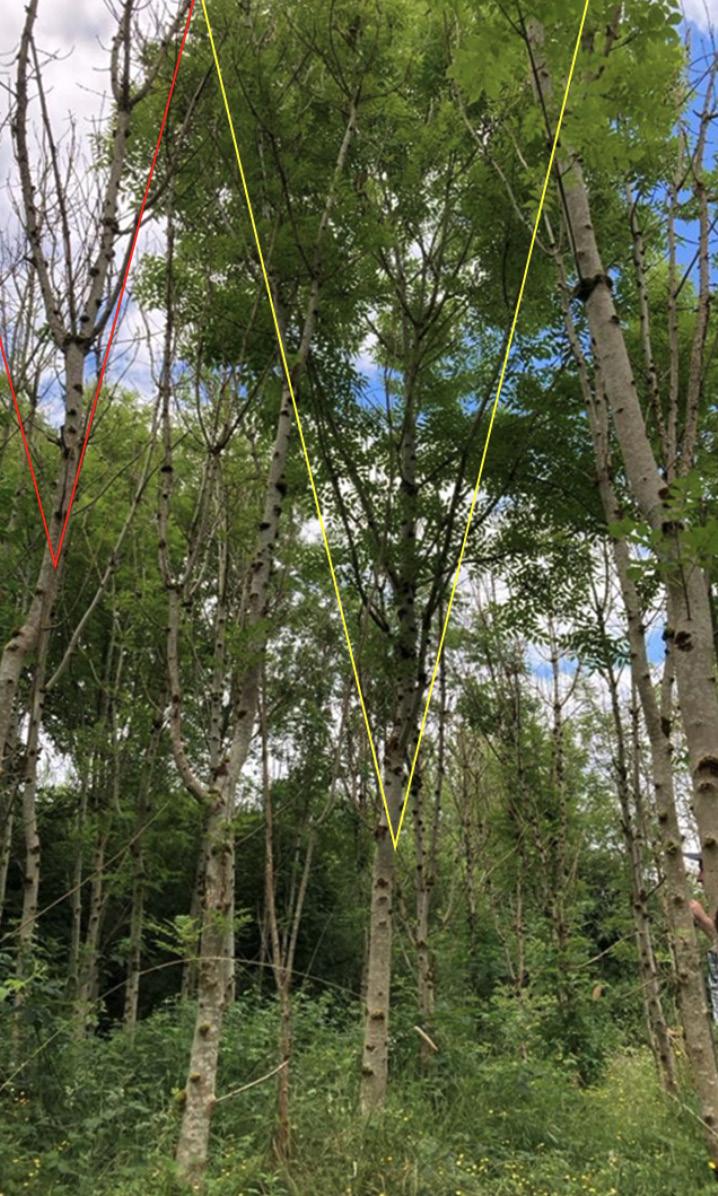
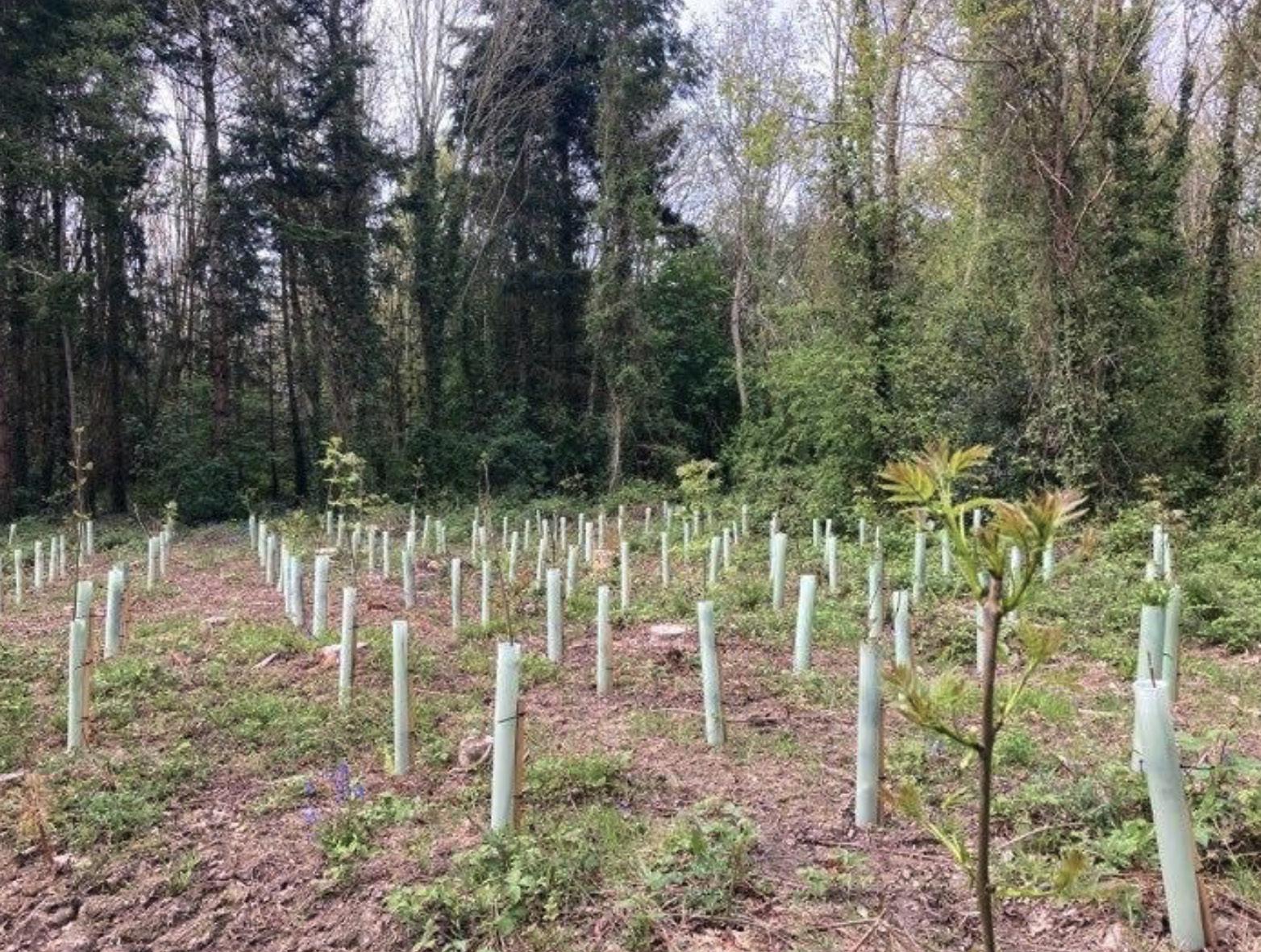
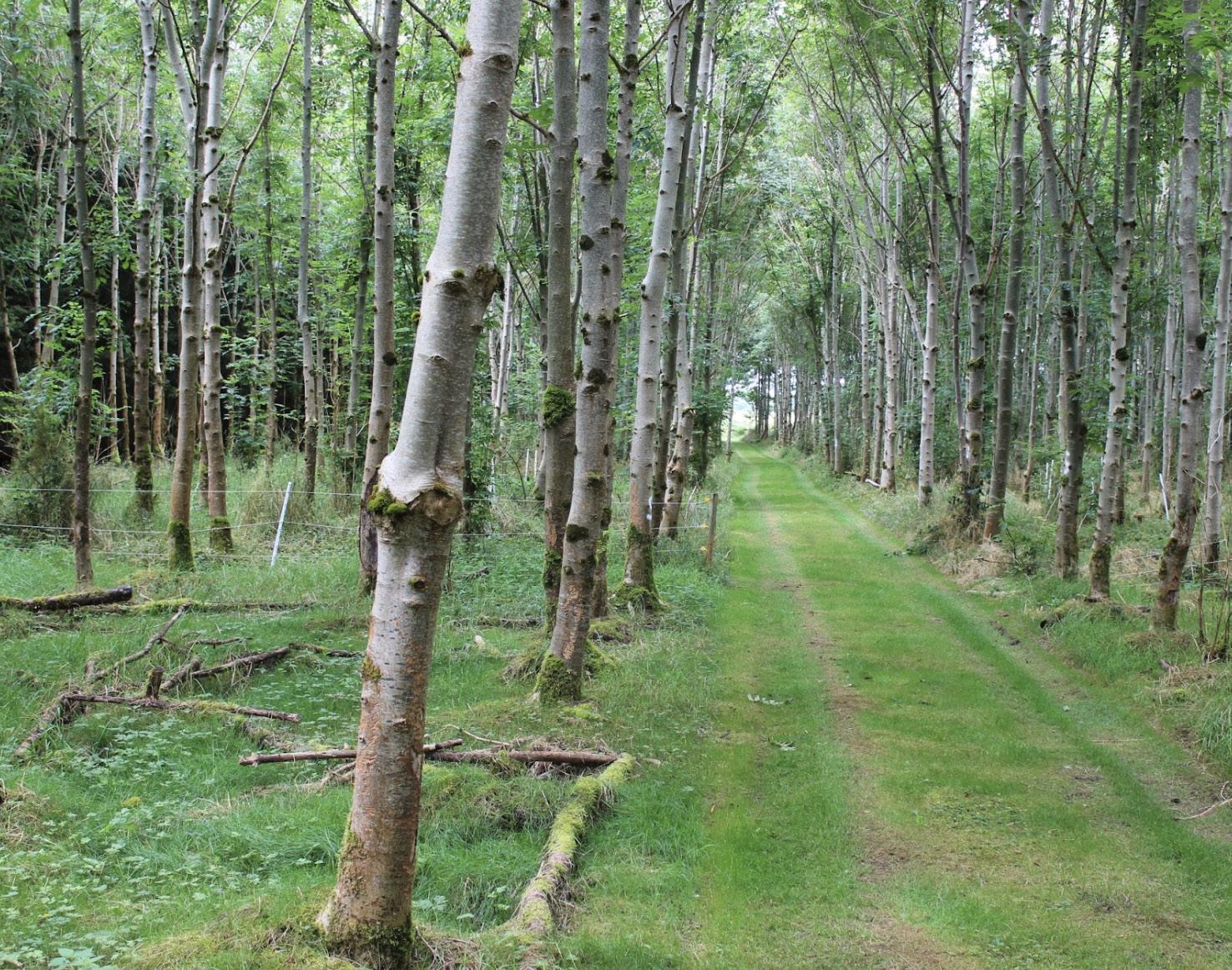
In 2015, Teagasc initiated an ash-breeding program aimed at developing ash genotypes tolerant to dieback disease. As a component of this initiative, a field trial featuring 1000 grafted Irish genotypes was established in Lithuania, a region known for its high disease pressure at that time, to assess and pinpoint level of dieback-tolerance in Irish genotypes. Furthermore, gene banks were established, comprising 208 ash genotypes sourced from ash within 15 European countries (Provenance trial). These genotypes exhibited higher level of tolerance to dieback in their native environments, prompting further investigation into their adaptability to Irish climatic conditions.
Over the past two years, preliminary data collected from the ash gene bank in Kilkenny indicates that approximately 28% of the 208 ash genotypes demonstrate a good level of tolerance to dieback. Moreover, approximately 5% of these genotypes exhibit an even higher level of tolerance, showing between minimal and no signs of dieback to-date. While these results are promising and generate excitement, it’s important to acknowledge that tree breeding is a lengthy process. Consequently, necessitating further testing and screening to ensure the development of resilient ash genotypes with durable tolerance to the dieback disease.
Results from the Lithuanian-based trial indicate that approximately


Offering a comprehensive range of professional log & woodchip drying kilns for the timber industry. Along with kilns for sawn timber, pallets & fencing producers.

KILN Services has been designing and manufacturing timber-drying kilns from its base in Essex for over 45 years. The company provides drying and heat-treatment kilns for all sectors of the industry, including softwood and hardwood sawmills, pallet manufacturing, fence-post producers, biomass fuel producers, modified timber and research facilities in universities and training colleges. In recent years, the market for kilns to dry biomass fuel has increased considerably. This has been driven by consumer awareness of product moisture and government initiatives to improve air quality, such as the Woodsure Ready to Burn accreditation scheme.
 Two 160 Cubic Metre Firewood Log Drying Kilns
One 16 Cubic Metre Log Drying Kiln Complete With 60kw Biomass Hot Air Heater
Two 160 Cubic Metre Firewood Log Drying Kilns
One 16 Cubic Metre Log Drying Kiln Complete With 60kw Biomass Hot Air Heater
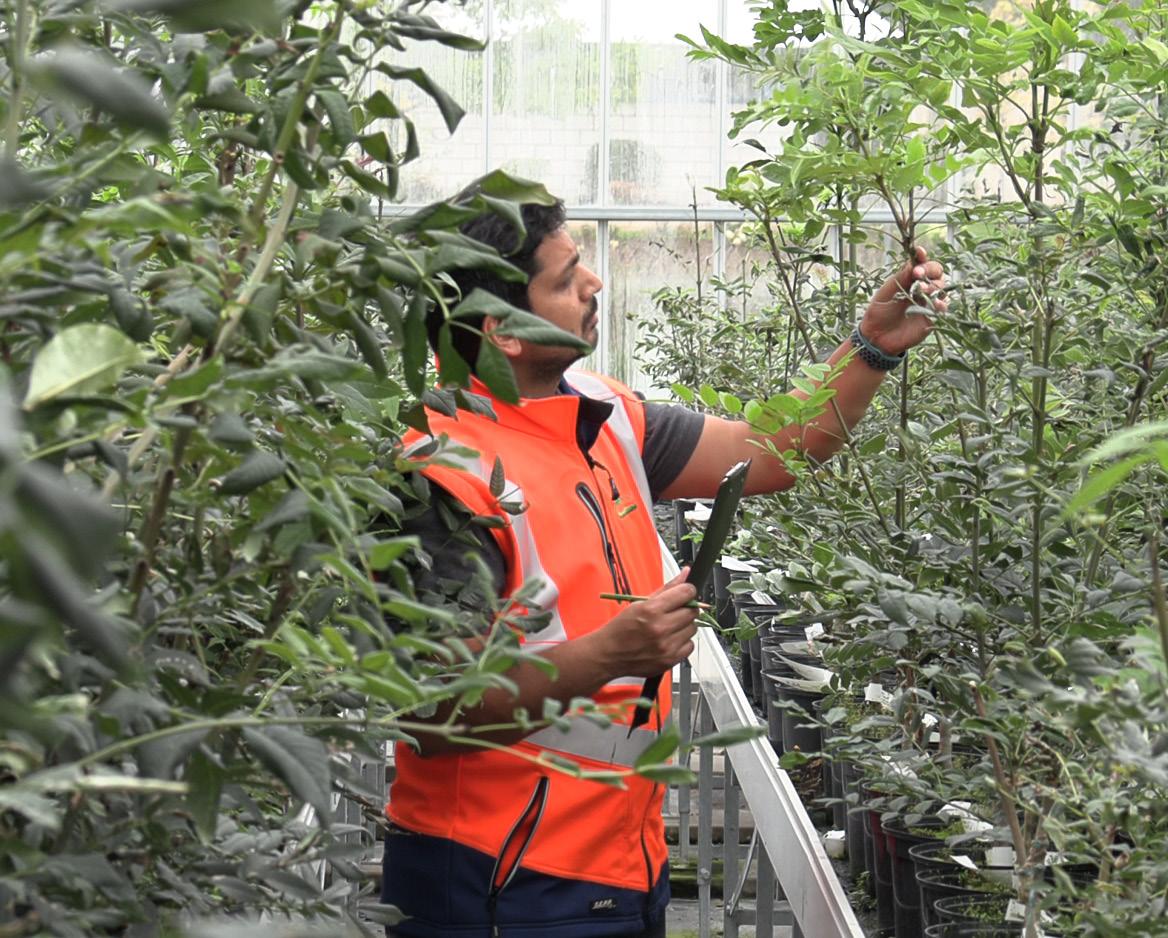
3.5% of the grafted ash genotypes of Irish origin exhibited higher levels of tolerance. As a result, these trees have been undergoing field testing in Ireland since 2023. Moreover, a new collection of Irish genotypes that have survived the disease infestation of over a decade has begun since 2021. Since then, a total of 220 new genotypes of Irish origin have been identified and cuttings were collected for grafting in order to screen for disease tolerance. These genotypes are currently progressing in terms of grafting and plant husbandry before being included in a multi-site field trial in Ireland.
More recently, a significant research project called ‘AshforFuture’, jointly funded by the Department of Agriculture, Food and the Marine (DAFM) in the Republic of Ireland and the Department of Agriculture, Environment and Rural Affairs (DAERA) in Northern Ireland, UK, has brought together research-performing organizations and partners from the broader forestry sector on the island of Ireland. This collaborative effort aims to preserve and restore ash as both a commercial and biodiversity resource. To achieve this aim, the AshforFuture project is structured around four distinct work-packages:
1. AshComm: This component is focused on developing a comprehensive communication strategy targeting various stakeholders including the public, forestry practitioners, Hurley manufacturers, policymakers, and the scientific community. Additionally, it supports the creation of the AshforFuture project webpage for knowledge transfer, coordination of stakeholder networks, and organization of steering group meetings.
2. AshGen: This aspect focuses on identifying tolerant ash trees for
selection and propagation through grafting for disease screening. Seeds obtained from healthy ash trees will be used in progeny trials, followed by the development of genetic investigation tools to validate durable tolerance, such as molecular genetic markers development.
3. AshPath: This segment investigates the interactions between the pathogen H. fraxineus and ash trees, including the variability of H. fraxineus across the island of Ireland and its virulence against selected putatively tolerant ash varieties to ensure future resilience.
4. AshSilva: This work-package aims to establish field trials to examine the impact of mixed tree species on ash and dieback disease, instead of monoculture for future planting.
Together, AshforFuture leverages a multidisciplinary wealth of knowledge and expertise to embrace a holistic approach towards ensuring the survival and sustainability of ash trees within the Irish landscape.
For further information about Teagasc Ash Dieback research please see the links below:
• https://www.teagasc.ie/contact/staff-directory/r/dheeraj-rathore/
• https://www.teagasc.ie/crops/forestry/advice/forest-protection/ashdieback/lifecycle-of-hymenoscyphus-fraxineus/
• http://www.coford.ie/media/coford/content/publications/cofordconnects/ CCNRM22BreedintoleranceAshDiebackDisease160620.pdf






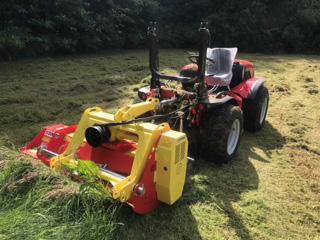

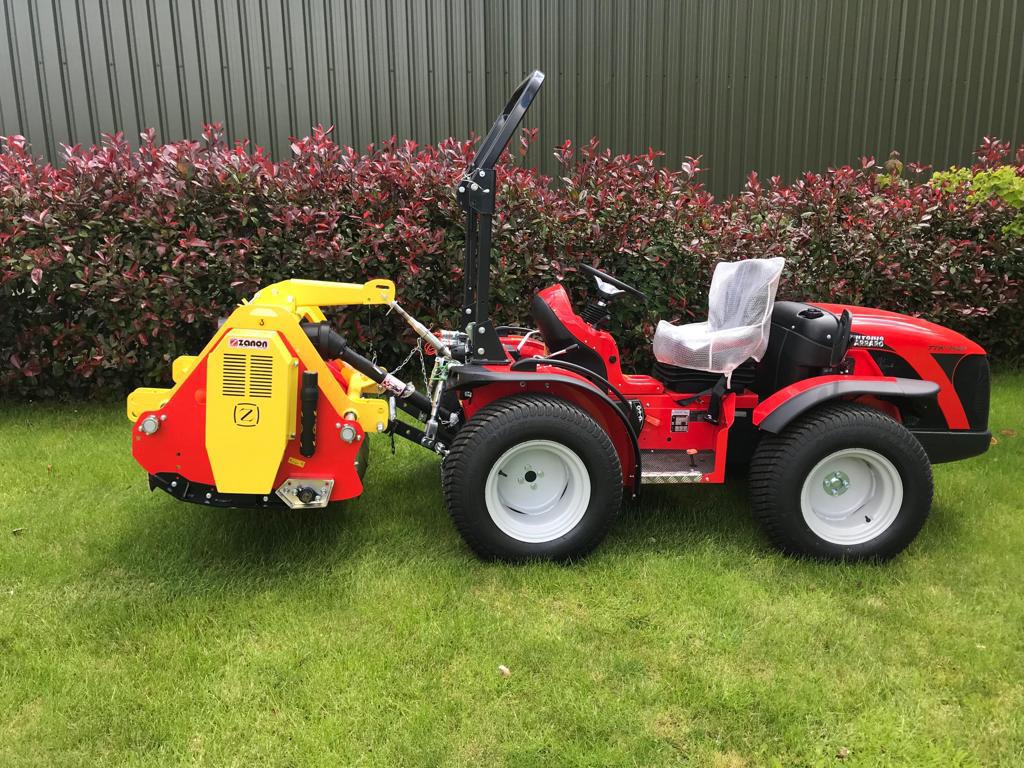
A group of pioneering Irish foresters and woodland owners are emerging as leading practitioners and advocates of Continuous Cover Forestry in Europe.
In summer 2023, a major forestry meeting on the topic of continuous cover forestry (CCF) was convened by Pro Silva Ireland to address the imperative need for transforming forest management practices in response to our changing social, economic and environmental priorities. Delegates from across Europe attended the three-day event based in County Wicklow. Recognising that CCF is not yet widely adopted in many countries, particularly those sharing a similar forest history to Ireland, the meeting aimed to explore both technical and cultural shifts necessary for professional foresters to embrace and implement new forestry strategies. This article summarises the key challenges and strategies for increasing the use of CCF, in Ireland and elsewhere in Europe.
Our changing climate and increased threats to forest health from pests and diseases are having an unprecedented impact on the structural and functional components of forest ecosystems. Furthermore, public expectations of how forests should be managed are becoming increasingly diverse and embracing values beyond timber production. Consequently, there is hot debate about the science and practice of silviculture and how forest management must adapt to these changing
realities. Established practices and norms are being challenged and this is transforming the “culture” of silviculture.
Silviculture has traditionally been defined as the science and art of growing and tending forest crops. This refers to the theory and the practice of controlling the establishment and growth of trees in forest stands in order to meet landowner objectives. Over time, two models have emerged for the management of high forests; rotational forest management (RFM) and continuous cover forestry. Both have their roots in an understanding of natural forest stand dynamics, which comprises four developmental stages: stand initiation, stem exclusion, understorey re-initiation and gap dynamic (Figure 1).
The primary objective of RFM is maximizing timber production. A stand is managed as a crop and clear-felled at the point of maximum economic return; a new rotation commences with re-stocking and establishment of a new crop. Conversely, CCF maintains the canopy as a permanent feature of the stand. The stand is allowed to develop through all four development stages. Trees are removed selectively from one intervention to the next and the structure becomes increasingly irregular. Ultimately, regeneration, growth and harvest of trees takes place simultaneously and the structure is controlled through regular, planned interventions.

Figure 1. The relationship between forest development stages and the major management systems in high forest. Currently most plantation forests are clearfelled towards the end of the Stem Exclusion stage. In CCF the woodland is managed through to the Gap Dynamic stage by selective removal of individual and small groups of trees. This allows for continuous production, natural regeneration, and retention of habitat attributes (e.g., coarse woody debris, standing deadwood). Transformation can be initiated early or later in forest development, depending on the site and stand conditions. Crown or graduated density thinning are especially effective for early-stage transformation.



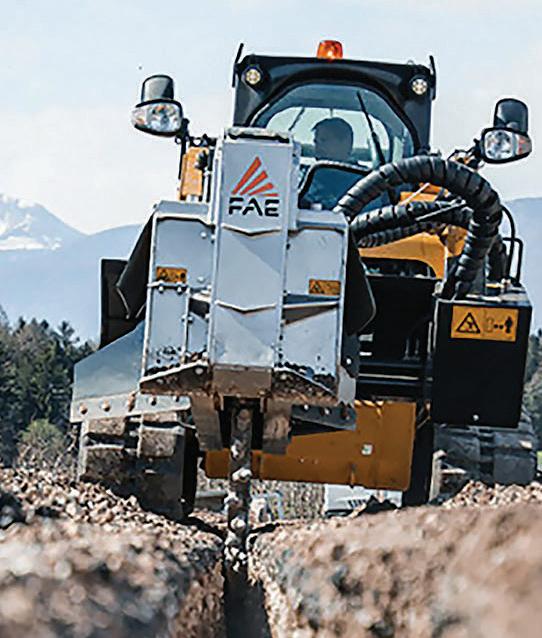
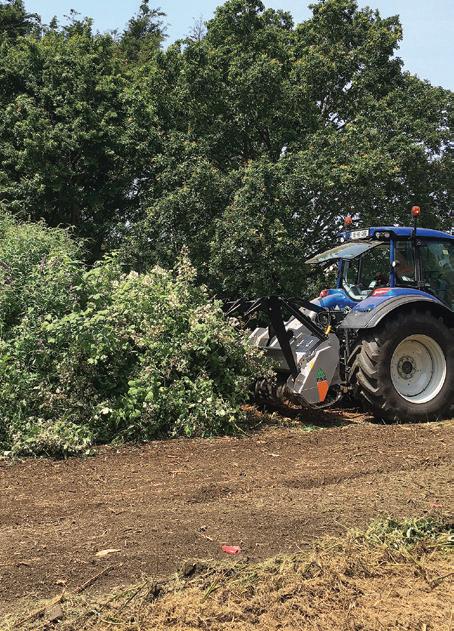




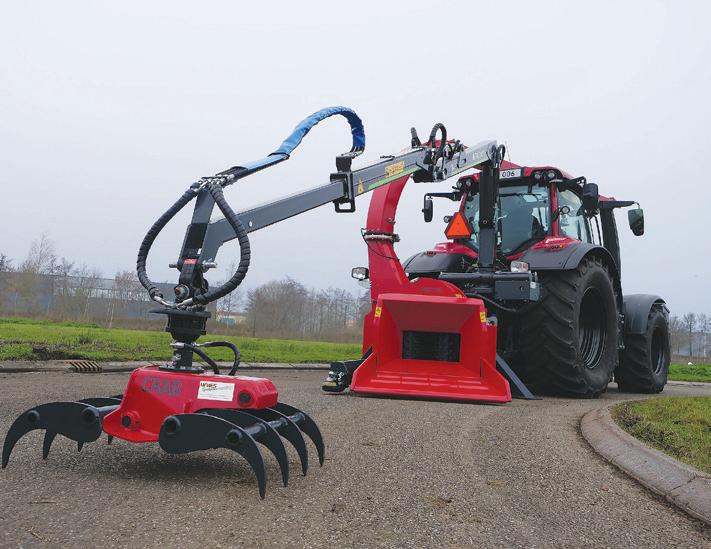


Whether its shredding, shearing, mulching, tilling, chipping, crushing, splitting or trenching we have tried, tested and trusted equipment from Europe’s leading manufacturers: FAE, Westtech/Woodcracker, Ufkes Greentec, M&J, Mus-Max, Rabaud & NHS.
Full sales and service backup.
Successful Miniplug/Container Forestry Nursery for sale due to Retirement after 35 years of growing seedlings.
Excellent reputation for quality miniplug seedlings supplied to Leading Forestry Companies in Ireland and UK.
Capacity for approx. 15m/Annum Miniplugs and Containers with room for expansion.
All necessary equipment/buildings trays, stillages etc. in excellent condition on site.
Environmental Controlled Greenhouses equipped with Gantry watering system.
Various tray types available.
Large Gantry irrigated Standing out area.
Full knowledge backup available.


For more information George Murphy 086 2231756 www.murphybrosferns.com


 Machinery Movers half page.indd 1
Machinery Movers half page.indd 1
The County Wicklow conference included a formal business meeting, field trips to showcase Irish silviculture, and informal gatherings. A historical survey of Irish forestry was adopted to provide a context for discussions. Unlike most countries in Europe, Ireland was largely deforested by the early 20th century. Restoring woodland has been an ongoing mission for over 100 years and relied largely on the use of nonnative species, including Sitka spruce and Douglas fir. Ireland shares a similar forest history to the United Kingdom and Denmark, but is quite distinct from elsewhere in Europe where larger areas of woodland have always been present. Nevertheless, the relative youth of Ireland’s forests belies a tangled cultural relationship with trees that stretches back to the mists of time. References to trees and woods in song, art and literature attest to a time when trees were more dominant features in the landscape, and influence contemporary values and appreciation of the natural environment.
Field trips took delegates to sites that represented the diversity of Irish forests and current management systems (Table 1). These started with semi-natural woodlands and progressed to modern forest plantations. Subsequent visits focused on forests at early and later stages of stand transformation to CCF, and where research and technical development projects could be presented, specifically: Ballycullen Forest (transformation research), Cloragh Wood and Knockrath Forest (advanced transformation, timber management, forest monitoring and water conservation), and Ticknock Forest (habitat and recreation). These visits provided a backdrop for discussions on the opportunities, barriers and knowledge gaps associated with promoting wider adoption of CCF in Ireland, and across Europe (Figure 2). A great discovery for many delegates was that there are outstanding examples of woodland with more than 20 years of active management on Continuous Cover Forestry principles (Figure 3).



Despite differences in woodland area and management traditions, foresters and researchers across Europe share many concerns about future resilience and the most appropriate practices in response to threats from climate change and forest health (Figure 4). Consensus was reached on the many benefits of continuous cover forestry, in addition to knowledge gaps and barriers to future progress:
Major benefits of Continuous Cover Forestry include:
1. Resilience Enhancement: CCF promotes the maintenance of a continuous tree canopy, mimicking natural forest dynamics and enhancing ecosystem resilience to environmental disturbances. With a diversity of tree species and age classes, CCF systems are better equipped to withstand climate variability and resist pest and disease outbreaks;
2. Biodiversity Conservation: CCF maintains habitat continuity and supports a variety of flora and fauna. This promotes biodiversity conservation and ecological stability over the long term;
3. Environmental Protection and Carbon Sequestration: CCF systems minimize soil disturbance and nutrient loss compared to RFM. Healthy soils support tree growth and contribute to carbon sequestration and storage within the forest ecosystem. CCF has a positive role in water quality and riparian habitat conservation.
Significant knowledge gaps were identified, especially among foresters in regions where RFM remains dominant:
1. Ecological gaps:
• Applying CCF in a changing climate, including selecting climate-adapted species, appropriate species mixtures, and managing carbon storage and sequestration;
• Comparison of resilience in stands managed on CCF and RFM systems;
2. Technical gaps: Application of mechanised harvesting systems in CCF;
3. Educational gaps: Limited professional experience of CCF and restricted number of reference sites at the local and regional level;
4. Economic gaps: Inadequate data on the economics of CCF, including timber quality, growth and yield.
Several common issues were identified as barriers to the wider adoption of CCF, including:
1. Educational: Limited awareness of CCF amongst woodland owners and inadequate knowledge mobilisation;
2. Cultural and historical: Lack of dedicated training opportunities for professional foresters and contractors, especially in areas where RFM has been dominant;
3. Ecological:
• Limited evidence-base for transformation of even-aged stands (with low species or structural diversity) to CCF;
• Browsing pressure from deer and other animals that limits natural regeneration of desired tree species;

4. Economic: costs and revenues of CCF are not well understood, and decision support tools are not widely available; lower prices (€/ m3) for large-dimension logs in CCF stands (depending on species and region);
5. Administrative: Current financial and tax incentives do not favour CCF in many regions.
The meeting allowed Pro Silva Ireland to present some of the pioneering forestry practices, policies, research, education and training taking place in Ireland. These include research into early-stage transformation of Sitka spruce stands, training initiatives in both the state and private sectors, implementation of forest monitoring networks using the AFI protocol, and policy advances supported by a new CCF grant programme for woodland owners. The ensuing discussion facilitated valuable knowledge sharing and agreement that an integrated strategy is necessary for wider adoption of CCF.
A successful future calls for a closer relationship between policy, practice and practitioners. We might call these the “Three Ps” to progress in technical and cultural transformation of our forest resources (Figure 5). Each component must be closely aligned. The policypractitioner axis requires two-way dialogue and consultation; the policy-practice axis focuses on the development of a robust evidencebase for new silvicultural approaches; the practitioner-practice axis is where new evidence is incorporated into management decision through time. Research, technical development and knowledge mobilisation are now recognised as critical for effective cultural transformation.
Key strategies for implementing CCF:
1. Research and Knowledge Mobilization: Invest in research to better understand the ecological and economic benefits of CCF, as well as the practical aspects of implementation. Disseminate knowledge through workshops, publications, and peer-to-peer learning networks to build capacity among forestry professionals.
2. Policy Development and Stakeholder Engagement: Develop policies that support the adoption of CCF, including financial incentives, regulatory reforms, and certification programmes. Engage stakeholders, including professional foresters, landowners, indigenous communities, and policymakers, in the decisionmaking process to ensure buy-in and support for CCF initiatives.
3. Training and Professional Development: Provide training and professional development opportunities for foresters to acquire the skills and knowledge needed to implement CCF effectively. This includes hands-on training in silvicultural techniques, ecological monitoring, and adaptive management practices tailored to local ecological and socioeconomic contexts.
The meeting highlighted the urgent need for transformative change in forestry practices to address the challenges posed by a changing world. Continuous cover forestry offers a promising solution for enhancing forest resilience, conserving biodiversity, and mitigating climate change impacts. By embracing technical innovation and fostering cultural change within the forestry profession, we can work towards a more sustainable and resilient future for forests and the communities that depend on them.
The success of the conference was due to the dedication of the Pro Silva Ireland committee and financial support from the Department of Agriculture, Food and the Marine. Additional input was provided by woodland owners who hosted the visits, University College Dublin, Teagasc Forestry Development Department and Coillte.
Edward (Ted) Wilson, is a silviculturist and director of Silviculture Research International. Email: ted.wilson@silviculture.org.uk.








































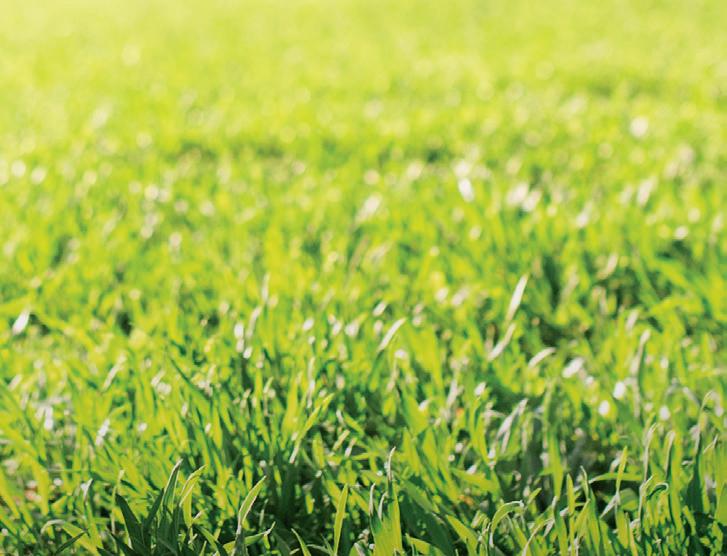








It pays to plant trees. Plant one hectare of native trees and receive premiums up to €22,060 over ten years subject to terms and conditions. Grants also available for planting costs and fencing. No afforestation licence required.
Explore your options at www.gov.ie/forestry




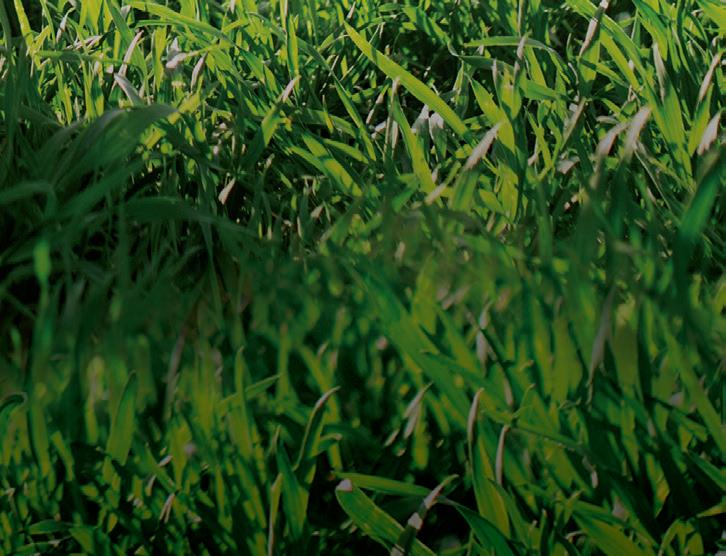







AdaptForRes is a project funded by the Department of Agriculture Food and the Marine and led by Dr. Niall Farrelly (Teagasc) looking to increase the resilience of Irish forests given the challenge of climate change. The project takes an all-Ireland approach with researchers involved from institutions such as Teagasc, AFBI, University College Dublin, University of Limerick, Trinity College Dublin and National Botanic Gardens. The research effort is split across three main pillars:
• Pillar I – Forest Genetic Options
• Pillar II – Forest Management Practices
• Pillar III – Forest Protection Measures
The main aim of Pillar I, is to assess whether the current range of forest reproductive material (FRM) is suitably adapted for climate change and whether additional FRM has potential to assist adaption, while maintaining sustainable production or conservation goals. Pillar II aims to conduct research into forest management options for minimising the impacts of climate change through enhanced mitigation (assessment of afforestation options). It will also evaluate the potential of using diverse and adaptive practices to increase the resilience of Irish forests. Work in this pillar will examine how to minimise the risk of carbon losses from existing forest stocks owing to the expected increasing frequency of natural disturbance. Pillar III will conduct research in forest protection and is in the process of carrying out a global horizon scanning exercise and pest risk assessment of key forest species. As well as examining the potential of using an innovative risk-based surveillance network (using sentinel sites) to detect and track the progression of pathogens in Irish forests. Taken together this project has a significant opportunity to increase the resilience of Irish forests and reduce the uncertainty associated with climate change. This article will focus on Pillar II, particularly on the ongoing work and future planned activities.
Climate change poses a significant threat to the carbon sequestration capacity of Irish forests, exacerbated by heightened risks from pests, pathogens, and escalating climate extremes, including storms, drought and intense rainfall. Building resilience in forest ecosystems is vital to protecting the numerous services they deliver such as carbon sequestration, biodiversity conservation, timber production, recreational space etc. The term resilience has become increasingly popular in both scientific literature, national and international policy, as a result of the challenge posed by climate change. One of the most relevant definitions for this project was posed by Holling in 1973, “a measure of the persistence of systems and of their ability to absorb change and disturbance and still maintain the same relationships between populations or state variables.” Trees and forest ecosystems are particularly vulnerable to climate change due to their long-lived nature and their limited capacity to respond to accelerated changes in the environment. Climate proofing or inferring resilience into the forest estate is of immediate concern. Currently, Ireland’s forest resource is very reliant on one species – (SS) Sitka spruce (Picea sitchensis), which compromises ~50% of planted forests predominately managed using a clearfell system (DAFM, 2022).
Forestry is slated to play a key-role in climate change mitigation both globally and nationally (Government of Ireland, 2023) and such strategies rely on the ability of forest ecosystems to sustain carbon stores and sequestration potential. Therefore, understanding carbon fluxes, external perturbations (such as storms, pathogens, pests etc.) and anticipating how climate change might influence these dynamics is essential to ensure the resilience of this resource. A major focus of ADAPTForRes Pillar II is to assess forest management options and identify climate-smart enhanced mitigation strategies. Carrying the


Specialising in brash extraction and Ash dieback clearfells across the country
Advantages of brash recovery
Site is fully cleared before replanting

Reforestation costs are significantly lowered
Reducing the spread of weevil
100% of your land utilised
main work burden in the project are three PhD students: Luke Dowd (UCD), Blair Ruffing (UL) and Stephen Byrne (TCD). Each student has individual responsibilities for different tasks, with an additional aim to combine their findings to develop a holistic approach to increasing forest resilience.
Study sites have been established to investigate the carbon stock and flux dynamics on three distinct forest types: commercial Sitka spruce forest on mineral soil (Dooary), broadleaf-dominated native woodland on mineral soil (Ballykilcavan), and a mixed Norway spruce and birch forest on peat soil (Colgagh).
Luke is investigating carbon stores in the woody vegetation associated with the three sites. Our understanding of carbon fluxes in the most common commercial coniferous forest type in Ireland has been well described in previous work, including up to date allometric equations for spruce species1. An allometric equation relates a difficult to measure variable such as biomass to an easily measured variable such as DBH or height. However, there is very little information on carbon fluxes or allometric equations for other increasingly important forest types/ species, or indeed for stands with diverse species or structures (e.g. mixed ages). For the peat site type, allometric equations specific for Norway spruce, birch and willow have been needed to quantify carbon stores. This process is labour intensive and involves destructive sampling, weighing all components of the tree in the field and the collection of sub-samples for further processing. An innovative approach to carbon estimation is being undertaken in the mature broadleaf type with the use of mobile laser scanning. This process involves a hand-held scanner to collect high-density point cloud data (c. 300,000 points per second), which can be used for tree volume estimation. This method, if successful, will be an alternative to destructive sampling of the large mature native trees associated with the site and carbon stocks will be established though manipulation of the point cloud instead. Through this work there is an opportunity to better understand and quantify the carbon stores within different forest types and “look into the future” to see how the carbon stores of forest estate might develop if current management approaches were altered.
Blair is measuring carbon losses via soil respiration, using both manual and automated chamber measurements, and partitioning between heterotrophic and autotrophic fluxes. Forest ecosystems play a significant role in global carbon cycling, harbouring a substantial
portion of aboveground and belowground terrestrial carbon. Accurately understanding the balance between photosynthetic activity and ecosystem respiration is crucial for determining whether forests act as carbon sources or sinks. In this context, measuring soil respiration and partitioning autotrophic and heterotrophic components are essential to comprehend carbon and nutrient cycling in forest ecosystems. Blair’s study investigates resilience factors in Irish forests by evaluating soil carbon fluxes across the same three forest types. The study sites, characterised by variations in age, soil type, management practices, and species composition, provide valuable insights into how respiration rates change in response to such variables and will indicate their likely implications for climate change mitigation. To enhance the understanding of soil respiration and ecosystem carbon dynamics in different forest types, this project collects additional data on litterfall, coarse woody debris, fine root turnover and distribution, and soil organic carbon stocks. These supplementary datasets will support the development of accurate models for carbon and nutrient cycling in forests, enabling better predictions of the impacts of environmental change on these vital ecosystem processes. Ultimately, the findings from this study will contribute to improved climate models, helping policymakers and land managers make informed decisions for sustainable forest management and climate change mitigation.
Stephen is conducting long-term continuous carbon flux measurements using the Eddy covariance (EC) technique mainly above the forest canopies. The long-term measurements being conducted over the three sites will provide annual estimates of net ecosystem carbon exchange (NEE), providing insights into the impact of climate variables and management strategies on the productivity of the entire ecosystem. Stephen will use data obtained from tower measurements to parameterise a model (QUINCY) to predict forest carbon flux dynamics in response to various management interventions. Enhancing the QUINCY model for use in Irish settings will be important for developing predictions of the response of various forest types to likely changes in climate up to the year 2100. It may also have the potential to improve estimates of current CO2 emissions across various forest types in Ireland. The ADAPTForRes team plan to collect EC data before, during and after a clearfell event at Dooary forest to investigate the impacts of that particular management strategy on stand carbon sequestration potential. The carbon storage capacity of a clearfelled forest is dramatically reduced immediately following clearfell, however there are uncertainties as to the patterns of respiratory losses from the ecosystem following clearfell. This is an important knowledge gap to fill as such losses dictate the speed of recovery of a stand to a positive


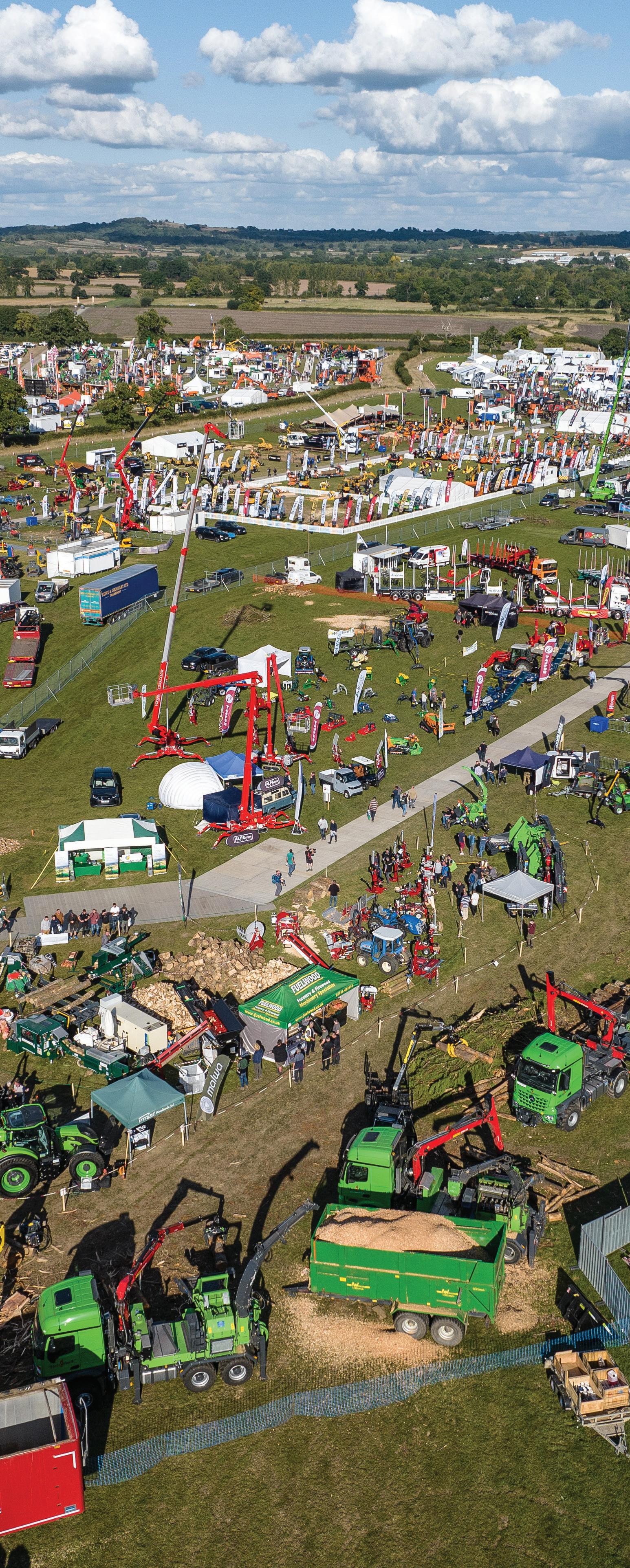


Featuring:
300 exhibitors of£80m working machinery
• The World Poleclimbing Championships
• The European Chainsaw Carving Championships
• The British Fencing Championship
• The APF Tree Climbing Championships
Traditional woodland crafts
Horse logging • The Forest Worker Zone
The Fencing Village • Topical seminars
The World Log To Leg Championships
UK Lumberjack Championships
19/20/21st SEPTEMBER 2024
Ragley Estate, Alcester Warwickshire B49 5PS www.apfexhibition.co.uk info@apfexhibition.co.uk 01428 723545




carbon balance. This study will provide quantitative data on the carbon flux dynamics following such an event, increasing knowledge about how best to manage rotation forestry.
Initial results from the eddy covariance monitoring suggest that the Sitka spruce forest at Dooary, which is nearing the end of its first rotation, is assimilating the most carbon of the three forest types (i.e. the current sequestration rate), while the mature deciduous broadleaved forest appears to be approximately carbon-neutral, possibly due to the age/maturity of the stand and high quantities of decaying biomass on the forest floor. The much younger mixed spruce/birch forest seems to be dominated by high levels of ecosystem respiration driven by the high organic content of the peat soil and low water table heights in summer. There is still much work to be carried out in unravelling these initial ecosystem assessments and investigating the proportional contribution from the various components of the ecosystems.
Forestry is inherently long-term in nature and requires sustained monitoring, particularly to further our knowledge of the continued impacts of climate variation on the Irish forest estate. Currently the primary focus is on data collection to enhance the ability to model simulations of future climate and various management options. Forthcoming work will involve modelling carbon dynamics using the QUINCY as well as the CBM-CFS3 models, to examine a range of scenarios. This work aims to inform landowners and policy makers alike to the trade-offs and synergies associated with various management objectives. Other modelling exercises will be conducted to assess current as well as future risk to the Irish forest estate from disturbance events like storms, pest/disease spread, fire, etc. The project will condense outcomes from across the work carried out in the three pillars into a series of climate smart management options which may be used for resilience building across the sector. The ultimate goal is to equip stakeholders with the necessary knowledge to ensure an adaptable, multi-functional and resilient forest estate.
References
• Black, K., Byrne, K. A., Mencuccini, M., Tobin, B., Nieuwenhuis, M., Reidy, B., Bolger, T., Saiz, G., Green, C., Farrell, E. T., & Osborne, B. (2009). Carbon stock and stock changes across a Sitka spruce chronosequence on surface-water gley soils. Forestry: An International Journal of Forest Research, 82(3), 255–272. https://doi. org/10.1093/forestry/cpp005.
• DAFM. (2022). Ireland’s National Forest Inventory 2022. Department of Agriculture, Food and the Marine. Johnstown Castle Estate, Co. Wexford, Ireland.
• Government of Ireland (2023). Ireland’s Long-term Strategy on Greenhouse Gas Emissions Reduction. Department of Environment, Climate and Communications. 9-31 Adelaide Rd, Dublin 2.
• Holling C.S. (1973). Resilience and stability of ecological systems. Annual Review of Ecology and Systematics. Vol. 4:1-23.







Email mcelhillengineeringltd@hotmail.com Website www.mcelhillengineering.com Facebook www.facebook.com/mcelhillengineering
McElhill, 26 Tiravally Road, Macken, Enniskillen, Co.



Grown Green are probably not a company you have heard of before but you will definitely have seen or stumbled across the reasons we were set up… millions of single use nonrecyclable plastic tree guards left to litter our countryside and roadsides.
We have developed an amazing range of environmentally friendly and naturally compostable guards which protect young trees, hedges and vines, once they have done their job they mulch down into delicious plant food. No collection costs, No disposal issues and No waste!
Grown Green guards are manufactured in the UK in our carbon neutral factory, they are 100% biodegradable, utilise certified FSC materials for full chain of custody, they are cost effective and much better for our planet.
The UK Government have started banning single use plastics, from carrier bags, drinking straws, ear buds, plastic cutlery, take away containers to name but a few, it feels like it’s only a matter of time before they turn their attention on the millions of plastic tree protectors being put into our countryside.
It makes no sense to us here at Grown Green when we see companies plant trees to help save the planet in huge plastic guards that will take hundreds of years to degrade.
There is an alternative, speak to us about your planting project and we will find the right guard for you.
Contact us at contact@growngreen.co.uk or call on 01225 413415 to discuss your planting plans.

There are as many opinions on how to manage your forest as there are forest owners ; especially regarding Sitka spruce in Ireland.
Planting and grass clearing are merely expenses in the early growth period but pay off in the long term. Thinning is done once or twice and probably gives a little income, most especially when the thinning harvest is contracted out.
Disadvantages of contracting out the harvesting of thinning’s are:
1. You are paying for the hire of equipment that costs hundreds of thousands of euros to do the work very quickly and often at a time not best suited to your land type or the weather conditions. You are also having to delay the thinning until the trees get to size that is a viable/profitable size for the big harvesting equipment.
2. You forgo the opportunity to be involved in the active management of your own woodland.
3. You lose much of the benefits of the grants available for the 1st and second thinning’s of your Broadleaf woodlands.
The average size of private grant-aided afforestation since 1980 is 8.6
ha. Therefore, on average harvesting thinning’s in these plantations will be more expensive when the cost of transferring the big machines in and out is considered.
Advantages of the Do-it-Yourself approach:
1. It is very different when it can be done with your own equipment costing only in the 10s of thousands at times that suit you better, especially for thinning when you invest in a JoBo stroke harvester that can be operated on a 6 or 8 tonne excavator (which may already sit idle for much of the year in your shed)
2. That way the first thinning takes place perhaps when the forest is 15 years old and not 30 years old.
3. You decide your own day; there is no boss who has an opinion on how you should lay out the work and you get to live close to nature.
Syketec Oy offers a range of Stroke harvesting heads starting with the St35 Rabbit shown here. Then the ST50 Bambi and the biggest one is the SR75 jumbo head . see www.sykeharvesteri.fi for the full range details.
Your active management of your woodlands brings you the ultimate financial return earlier.
The final felling when the forest is fully grown gives the big return on investment, but the cycle time of the forest for Spruce less than 40 years in Ireland ... The big income comes roughly every 30-50 years. However, in the slower growing broadleaf crops it can be earlier for example if you avail of the Woodland Improvement grant Scheme which provides support (€1200 per ha) for thinning and tending of broadleaves that now cover 218,000 hectares, of the overall forest estate. 243,000 m³ of firewood was used in the Republic of Ireland to a value of €35 million. This is a ready income stream for the private woodland owner. It can contribute enormously to the circular economy, in rural Ireland.
If you are a tillage farmer, spring and autumn are intensive periods. Many people work long hours and into the night to get the job done when the weather and conditions are at their most optimal. However, the income comes twice a year, at harvest time and when the EU grants come, therefore many have crop cultivation as a side job and mainly work with other things. In these situations, forest work may fill the gaps and provide healthy income to the family farm.
Want to know more: look up www.syketecharvesteri.fi. Interested? Contact Con Little t/a TreeDimensions Email clittle@treedimensions.ie or telephone +353 87 2554183

Machine Specifications:
The logic behind the development of the WP50 WOODPECKER by Syketec Oy in Finland is to build a simple yet multifunctional wood processor.
It is built in modules:
• the base frame with the 50cm stroke is hydraulically tilted but is manually slewed
• it can handle up to 20cm of stems, winched into the grip
• a hydraulic winch is an option, to be used if no crane is available
• it can travel on its own bogie, or if on a three-point linkage on a tractor it has support legs instead
• the oil tank is an option, used when base a tractor-based machine is not used. Connected to the tank it can have a tractor driven PTO pump
• if not tractor driven it can be ATV pulled, then with its own power unit. It is then completely self-contained.
In short it can be applied to different platforms in very many ways.
The control system is specifically developed for multipurpose use:
• it can process full length trees; it has 6 preselect lengths: e.g. it can cut to 3-meter lengths or longer.
• in another mode it is doing a fully automated wood processing, splitting into two or four pieces
• It may be fitted with its own small bundler device.
JoBo ST35 Rabbit

Jobo Stroke Harvesting Heads were developed by a private woodland owner in Finland, for private woodland owners who want to harvest their own timber. JMEKA Multi-function mini-diggers with continuous 360° rotation and 30 accessories is a perfect complement to power the JoBO ST35.

Tried and tested in Ireland by private woodland owners. They can be fitted to 6 or 8 tonne excavators, or to a reverse drive tractor with forest crane mounted on the 3-point linkage.

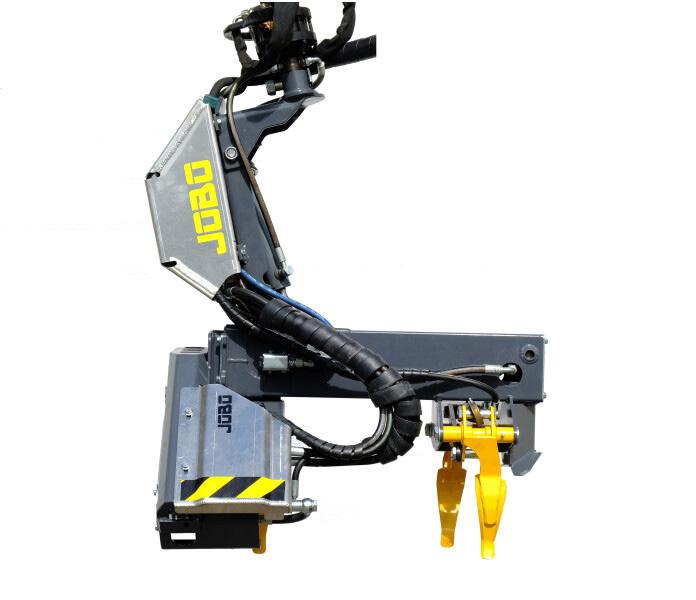
Con Little t/a TreeDimensions. Powerstown, Clonmel Email: clittle@treedimensions.ie | Phone 0872554183
Actual model delivered depends on specification ordered and the pictures are for illustration purposes.

Logosol are proud to announce that they are celebrating 35 incredible years as a company! To mark this milestone, we’re bringing you great deals and exciting new products to enhance your sawing experience.
Enjoy discounts of up to 35% on accessories! Yes, you read that right - up to 35% off selected accessories to complement your machines.
Here are some favourite deals:
• 12,5 % discount on chain sawmills F2 & F2+
• 10 % discount on band sawmills!
• 15 % discount on the Timberjig
• Upgrade your band sawmill! 35% on accessory packs
• Upgrade your chainsaw mill! 35% on accessory packs
• 30% Discount on Carbide Band Blades
• 10% Discount on LM410 Log House Moulder
Logosol’s Spring Campaign runs until June 10th 2024, so don’t miss out and get in touch with Roland on 085 1395457.
LOGOSOL INTRODUCES REVOLUTIONARY NEW PRODUCTS AND LAUNCHES THE INDUSTRY’S BEST WARRANTY POLICY, 5 YEARS
As the sawing season begins, Logosol welcomes spring with exciting developments!
“Logosol are proud to introduce the latest addition to their band sawmill family, the Logosol B1651, capable of sawing enormous logs. Logosol are also rolling out extensive upgrades to our existing band sawmill models.
In addition, Logosol are introducing a 5-year warranty on their machines, offering the best warranty policy in the industry,” says Fredrik Forssberg, CEO at Logosol.
LOGOSOL B1651 HANDLES ENORMOUS LOGS

The Logosol B1651 represents a milestone in band sawmill technology. This fully automatic band sawmill is designed to handle enormous logs and offers an unbeatable combination of stability, precision, and capacity.
The B1651 sawmill is incredibly useful because it can saw wide wooden slabs up to 1500 mm in width and regular timber with the
highest precision.
Thanks to a patent-pending solution with movable blade guide rollers and flexible log beds, it can also saw timber of all sizes, even slender logs, a feature unique to sawmills in this size class.
The B1651 is the ultimate choice for both professional sawyers and dedicated hobbyists.
“With the B1651, you can saw boards as wide as table tops with a very high value. You’ll quickly earn back your investment with a sawmill like this,” states Fredrik.
In addition to the launch of the B1651, Logosol introduces upgraded control systems for its band sawmills B751 PRO and B1001. They are designed to offer simplicity, increased flexibility, and efficiency in the wood processing process. Here’s a closer look at each accessory:
NEW CRANK ATTACHMENT FOR B1001 BAND SAWMILLS, “CUT SET”
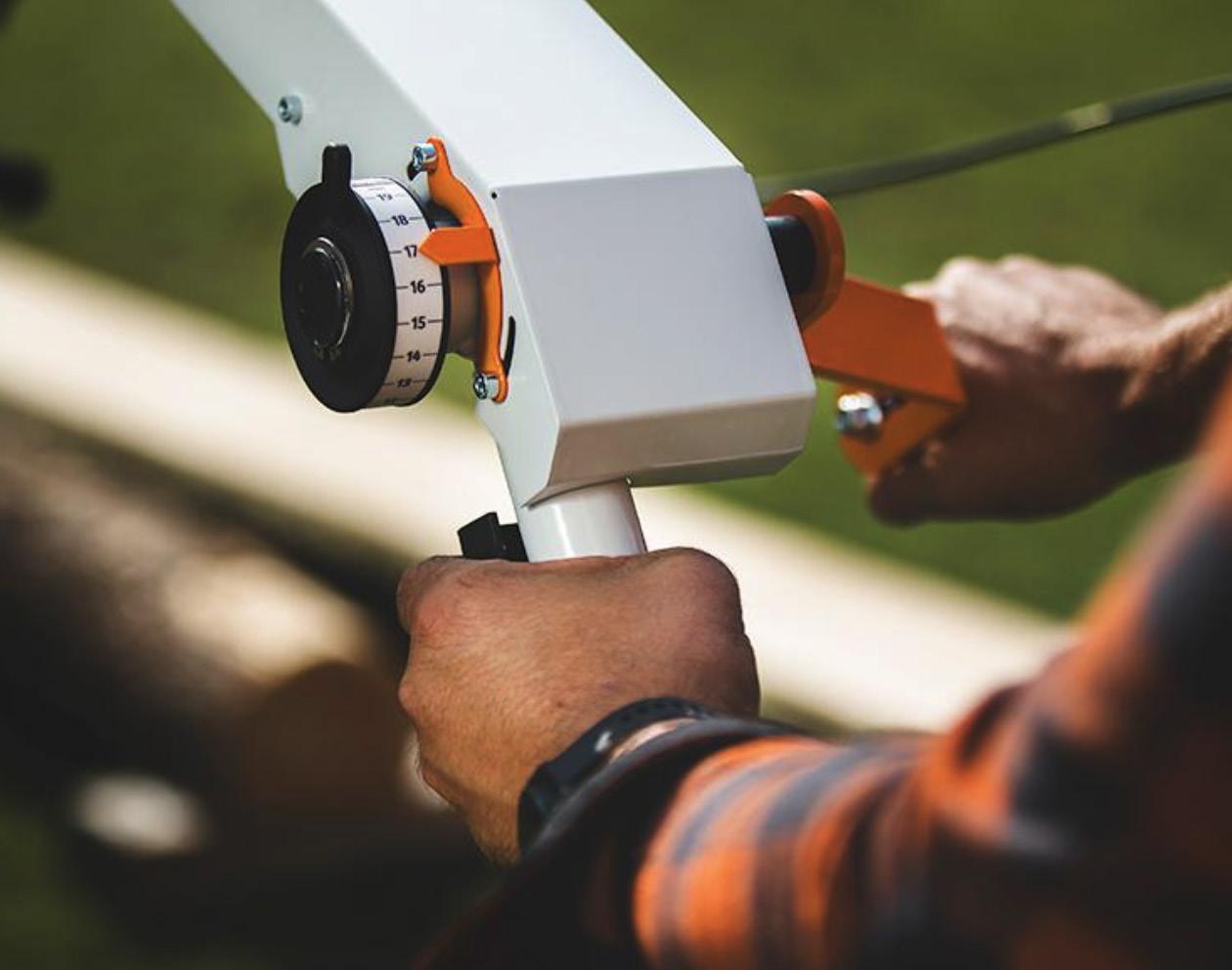
Logosol are excited to introduce a new crank attachment for our B1001 band sawmills. This attachment will enhance the performance and accuracy of your sawing operations. It is designed to give you precise control over the saw head height and make your work easier and more comfortable.
The new crank attachment features a manual cut set with a millimetre scale. This allows you to adjust the saw head height in millimetre increments, which gives you absolute precision. You can easily read the measurements on clear scales. You can also adjust the pointer for optimal viewing angle, making reading easy.
The ergonomic design of the crank attachment gives you a comfortable sawing experience. Thanks to separated ratchet and crank functions, you can easily operate the ratchet with your left hand and crank with your right. You can customize the crank handle to adjust speed and resistance to your own preferences. A smart gear ratio makes the setting smooth.


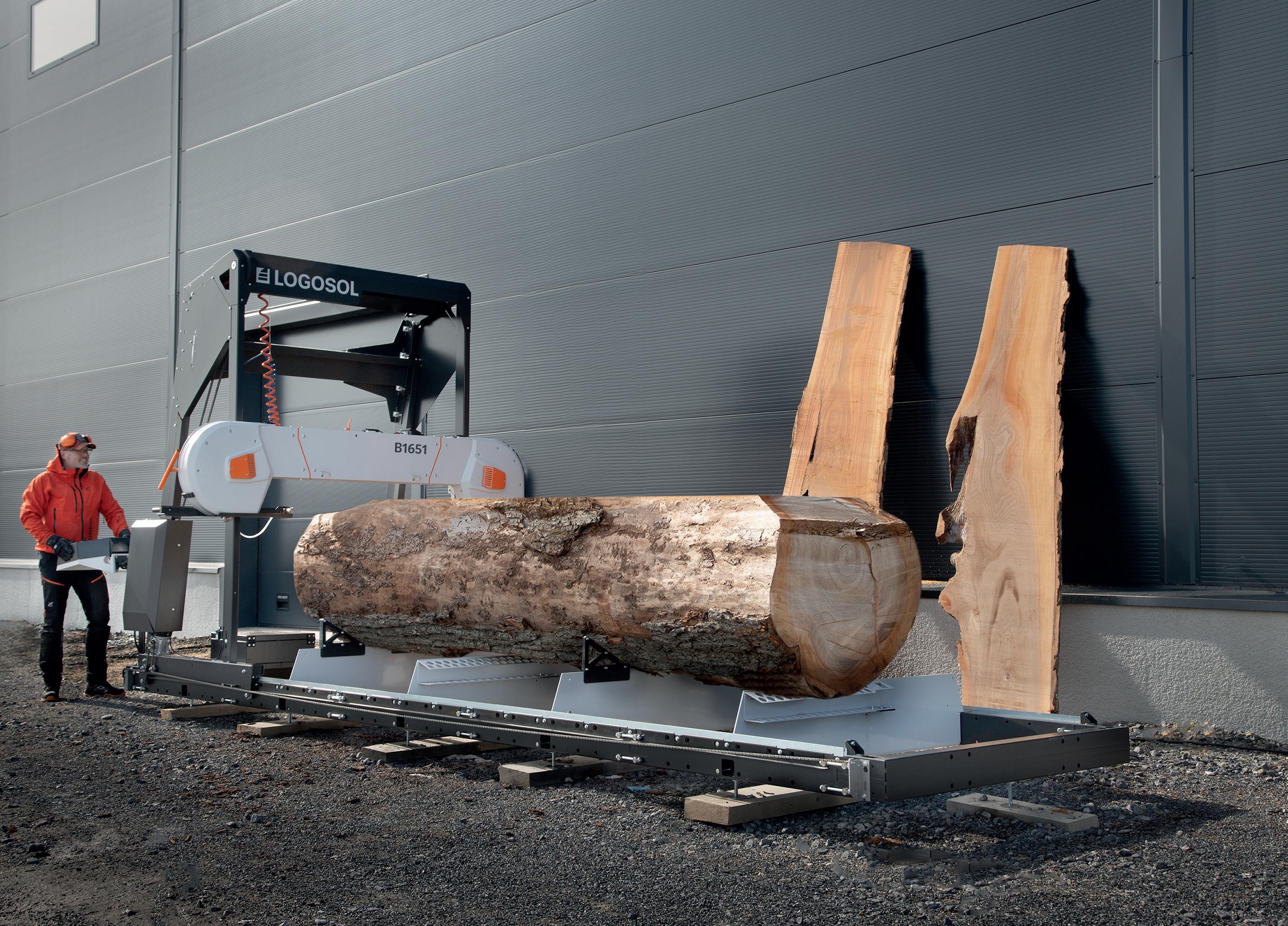

Easy Set is a manual, motorized height-adjustment system that makes it easier for the user to adjust the saw blade’s height and width of the cut.
This system is perfect for sawyers looking for a quick and easy method to adjust their cuts without compromising precision.
Pro Set is an advanced, motorized height-adjustment system that offers speed, higher precision, and convenience in setting cuts.
With Pro Set, users can program their own series of cuts and save specific cut settings, enabling consistently accurate results at the push of a button.


Pro Feed is an automatic feeding system that controls moving the saw head through the log.
With Pro Feed, users can set a smooth and consistent feed rate, ensuring even sawing and reducing the saw blade’s risk of deviating.
The system helps users find the right speed.
Logosol has taken a significant step forward for customer satisfaction by introducing an extended 5-year warranty.
“This extended warranty period is our way of showing our commitment to quality and sustainability,” explains Fredrik Forssberg, CEO of Logosol.
Customers can now enjoy added security and confidence in their purchase.
“Our machines are designed to perform over time, and this warranty underscores our belief in the product’s durability,” adds Forssberg.

Logosol, founded in 1989 in Härnösand, Sweden, celebrates 35 years in the industry this year.
With a passion for innovation and quality, Logosol offers a wide range of sawmills, planing machines, and accessories designed to meet the needs of anyone looking to saw or plane building materials from wood!
In early 2024, Logosol moved into its newly built facility in Härnösand. 6000 square meters, including product development, in-house manufacturing of machines and accessories, a large warehouse, and a stylish showroom.
For Information/Brochures on all Logosol Products, Please Contact the Exculsive Distributor of Logosol Products to Ireland Roland Flower at The Saw Doctor on Tel: +353 851395457 or e-mail Info@thesawdoctor.ie websites: www.logosol.ie and www.thesawdoctor.ie
Bord na Móna has a substantial annual biomass requirement to fuel its power plant at Edenderry Co. Offaly. The company is offering suppliers a continuous year round offtake with sustainable contracts.
For further details please contact:
Kevin Whelehan 087 1732448 kevin.whelehan@bnm.ie

Joseph Spollen 087 965 4645 joseph.spollen@bnm.ie

Ciara Wynne 087 185 3647 ciara.wynne@bnm.ie

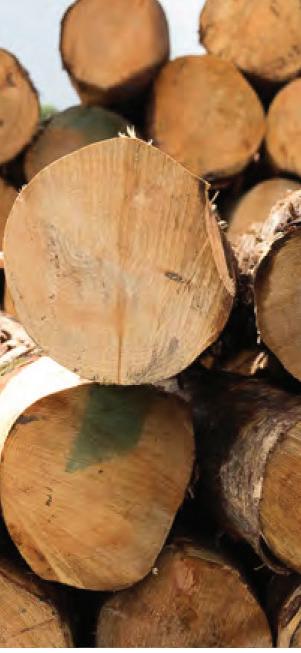

With world class processing facilities capable of processing in excess of 1,000,000m3 of logs annually, Murray Timber has the capacity to ensure that forest owners always get the best price for their timber.

Call our Forestry Manager John Ryan today on 087 7928405

Ballon, Co. Carlow, Ireland. T: +353 (0) 59 915 9178 E: sales@mtg.ie
Ballygar, Co. Galway, Ireland. T: +353 (0) 90 662 4688 E: sales@mtg.ie